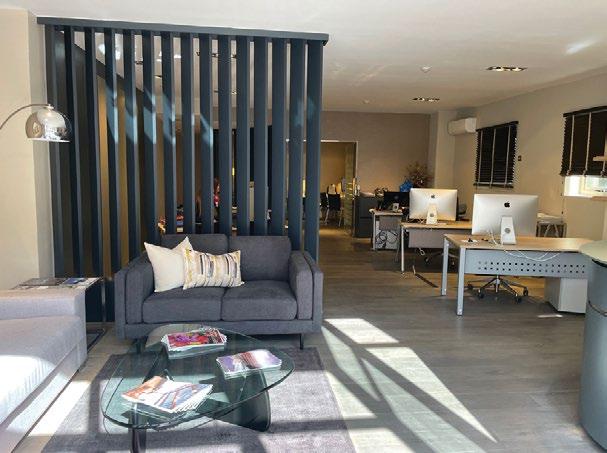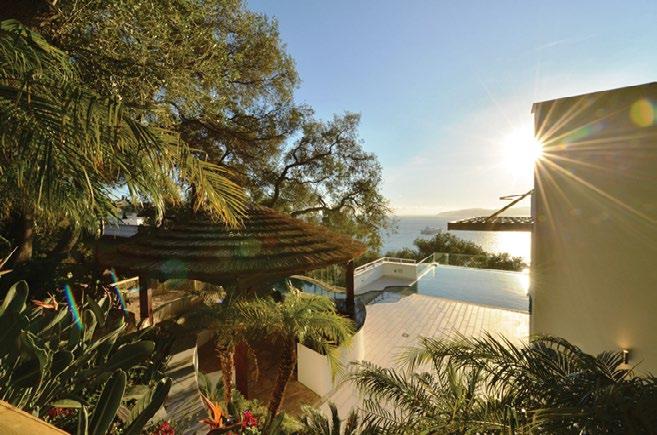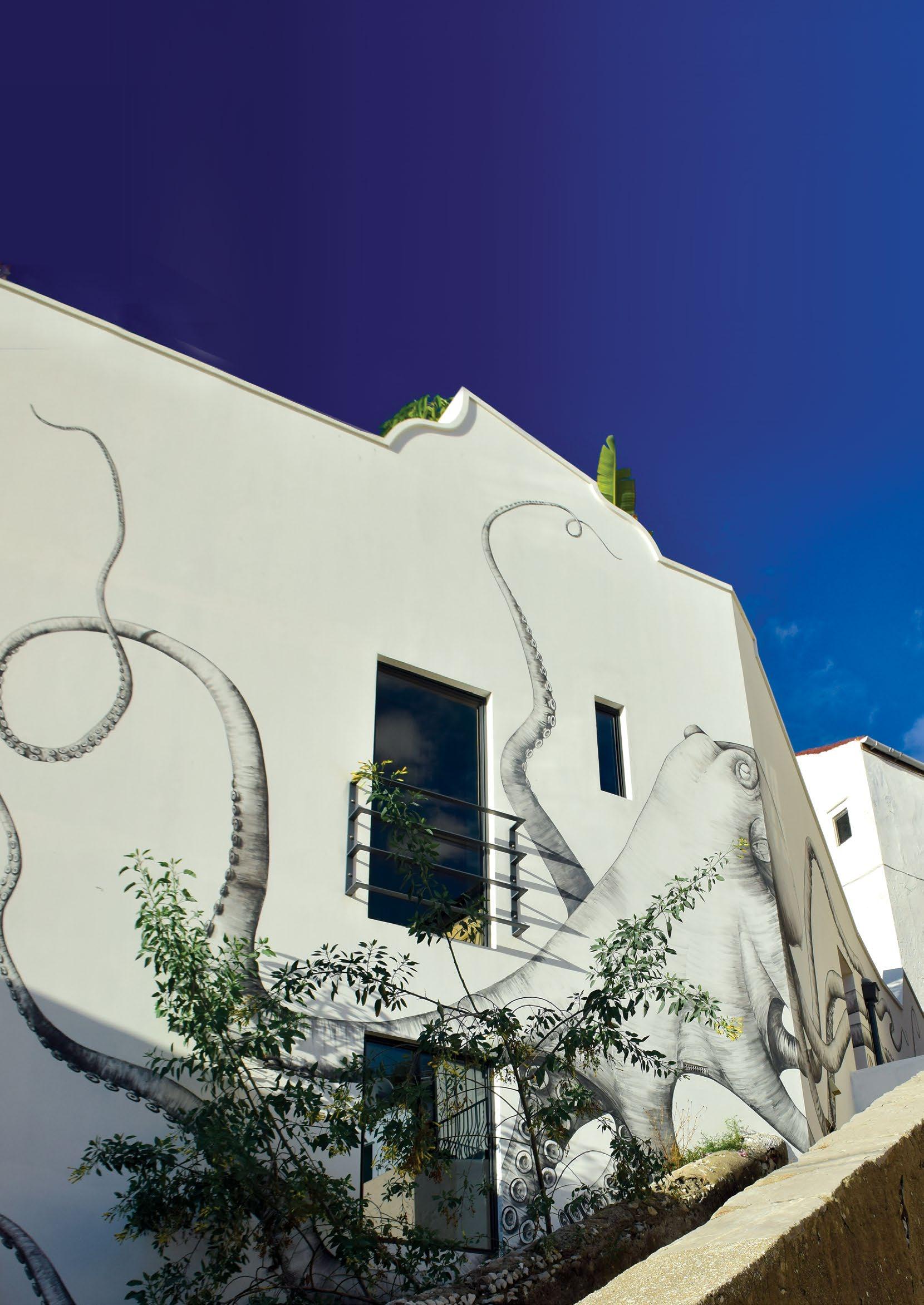






















Are






GIBRALTAR’S OWN COMMUNITY MAGAZINE FEATURING BUSINESS, MOTORING, SPORT, WOMEN’S FASHION, HEALTH & WELL BEING, CULTURE,LOCAL EVENTS AND SO MUCH MORE.


Each month, Community Insight magazine is distributed across Gibraltar - from banks, gyms, and offices to the World Trade Center, clinics, the University of Gibraltar, the GFA, and major car dealerships. With engaging, high-quality content, each issue remains on display throughout the month and beyond, keeping your brand visible and top of mind.
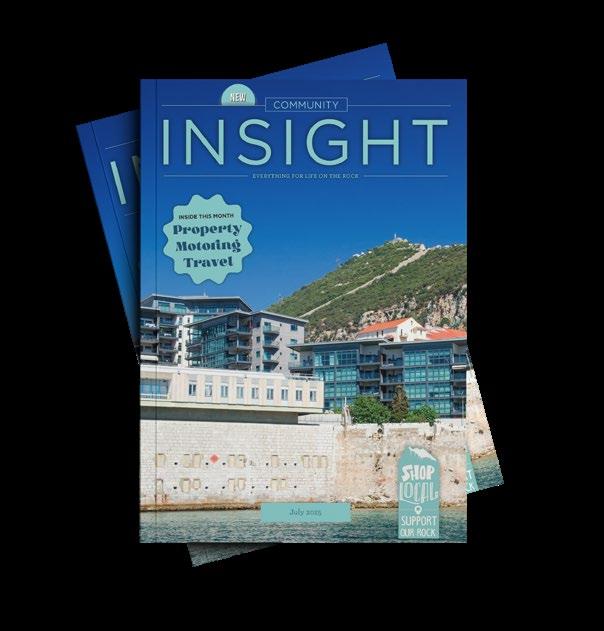



means your brand connects directly with Gibraltar’s buying audience - in print, online, and across social media.
• Rates from just £60/month. Discounts available for 4+ months. • Free




At its core, treasury management involves overseeing a company’s financial assets and holdings to ensure adequate liquidity, optimise investment returns, and mitigate financial risks. Strong treasury practices contribute directly to operational stability and long-term growth.
Here are some common challenges our clients have been facing and how effective treasury management techniques we used, have helped them improve their operations and bottom line:
One of the biggest headaches for businesses operating internationally is foreign exchange (Forex) volatility. Exchange rates can swing due to economic shifts, geopolitical events, or interest rate changes. Especially in Gibraltar, where many businesses either service European clients, or have European suppliers, Forex exposure is very common.
Treasury management tackles this challenge with hedging tools such as forward contracts, options, and swaps. These instruments lock in rates or provide protection against unfavorable movements, allowing businesses to forecast cash flows with greater accuracy. By actively monitoring markets and applying structured strategies, treasury teams ensure that currency fluctuations don’t erode profit margins or destabilize budgets.
Holding large sums of cash in non-interest-bearing accounts is another hidden challenge. Many firms keep reserves for operational security, but in the absence of treasury oversight, that cash often sits idle, earning little to nothing. Over time, the opportunity cost is substantial.
Treasury management provides a solution by forecasting cash needs and investing surplus funds strategically. Techniques like cash pooling and concentration consolidate balances across subsidiaries, reducing idle funds and creating larger pools eligible for higher-yield instruments. By aligning liquidity needs with investment opportunities, treasury ensures businesses can meet obligations while maximizing interest income from otherwise dormant resources.
International businesses often grapple with high costs from cross-border transfers, currency conversions, and banking fees. Without centralised oversight, each subsidiary may transact independently, leading to duplicated fees and a lack of negotiating power with banks.

In today’s increasingly complex financial environment, businesses of all sizes face mounting challenges in managing liquidity, reducing risk, and optimizing financial returns. Treasury management, once seen primarily as the domain of large corporations, has become essential for companies across industries and scales. Effective treasury management is not merely about keeping track of cash; it is about strategically managing financial resources to ensure stability, minimise risk, and create opportunities for growth.
Treasury management addresses this by centralising payments and integrating systems across the business. This consolidation allows companies to negotiate better rates with banks and identify the cheapest transfer routes. Many treasury teams also leverage fintech platforms to reduce foreign transfer costs and accelerate settlement times. By treating payments strategically, businesses reduce overhead while ensuring smoother global transactions.
Growing businesses often operate in multiple regions, each with its own bank accounts and cash positions. This fragmentation creates inefficiencies: one subsidiary may be cash-rich, while another struggles to fund operations, forcing the group to borrow externally at unnecessary cost.
Treasury management solves this through real-time visibility and liquidity optimisation. With a treasury management system (TMS), companies can see consolidated balances across all entities and move funds where they are needed most. Internal lending between subsidiaries replaces external borrowing, reducing interest
costs and improving overall efficiency. This holistic view also helps treasurers prepare for unexpected needs without scrambling for expensive credit lines.
Compliance with financial regulations—ranging from anti-money laundering (AML) and know-your-customer (KYC) requirements to tax reporting—is increasingly complex. Companies with limited oversight may inadvertently breach these rules, facing fines, reputational damage, or strained relationships with financial institutions.
Treasury management strengthens compliance through structured processes and automated reporting. Standardised workflows and clear segregation of duties reduce fraud and error risks, while technology ensures timely, accurate reporting to regulators. By embedding compliance into daily operations, treasury not only avoids penalties but also builds credibility with banks and investors.
What makes treasury management truly valuable is its dual role: solving operational pain points while unlocking strategic potential. For example, a company with consolidated liquidity insights can confidently expand into new markets, knowing its cash is accessible and costs are controlled. A firm that actively manages currency risks can price products competitively across borders without fear of margin erosion. And one that maximises returns on idle cash builds financial resilience, turning everyday balances into a growth engine.
In conclusion, businesses that prioritise treasury management not only shield themselves from risk but also uncover hidden opportunities—the “treasure” within treasury. In a world of increasing financial complexity, those that master treasury will find themselves better positioned to grow, compete, and thrive.
Eran Shay, Managing Director Benefit Business solutions www.BenefitGibraltar.com
The Minister for the Port and Maritime Affairs, the Hon Gemma Arias-Vasquez MP, officially launched Gibraltar Maritime Services, a new digital platform uniting Gibraltar’s Ship and Yacht Registries under one brand. The launch formed part of Gibraltar’s participation in London International Shipping Week 2025, where the Minister was joined by the Captain of the Port John Ghio, representatives of the Gibraltar Port Authority and the Gibraltar Maritime Administration.

The initiative is led by Aaron Lopez, who heads Gibraltar Maritime Services. An analysis commissioned earlier this year highlighted that while competing ship registries such as Singapore, Panama and Cyprus maintain strong and active presences on platforms like LinkedIn, Gibraltar’s registries were largely absent. The report concluded that the lack of a professional online presence was contributing to a loss of visibility and potential revenue for Gibraltar’s maritime industry.
Michael Tobin ranks 4th in tech rankings, as industry prioritises trust and compliance
Michael Tobin, CEO of Continent 8 Technologies, has been named one of the top global tech leaders in the iGaming industry, as featured in GamblingIQ’s ‘Game of Trust’ 2025 edition. This recognition comes at a pivotal moment for the sector, which is increasingly prioritising transparency, regulatory compliance and technological resilience.
Tobin has been at the helm of Continent 8 since its inception over 25 years ago. He has been instrumental in positioning the global business as a cornerstone of infrastructure for regulated iGaming and online sports betting markets worldwide. He has cultivated deep relationships with regulators, operators and technology partners, enabling Continent 8 to deliver secure, compliant and scalable IT solutions across more than 100 locations globally.
A true people-person, he is widely respected within the industry. Gambling IQ’s commentary on Tobin mentioned: “Michael To-
The new Gibraltar Maritime Services platform directly addresses those findings and includes:
1. A dedicated website at www.maritimeservices.gi providing clear guidance on ship and yacht registration, fees, survey requirements and compliance frameworks.
2. Official LinkedIn, Facebook and Instagram pages to connect with shipowners, managers and agents worldwide, with LinkedIn as the lead platform for professional engagement.
3. Regular content showcasing Gibraltar’s advantages, industry insights and case studies from across the maritime sector.
As part of the wider pro gramme, Minister AriasVasquez addressed an audience of over 500 at tendees at the post-con ference reception hosted by the Government of Gibraltar. In her address, the Minister empha sised Gibraltar’s unique strategic location and reaffirmed Gibraltar’s clear message to the international mari time community: we are open for business. During the event, the Min ister also held discussions with the Secretary-Gen eral of the Internation al Maritime Organisa tion, Arsenio Antonio Domínguez Velasco, who delivered his own keynote remarks.
Gibraltar was strong ly represented through out London International Shipping Week by a significant delegation of maritime stakeholders from across the sector


bin has become one of the defining figures in iGaming infrastructure… In an industry often chasing the next big thing, Tobin embodies the kind of leadership that prioritises stability and sustainable growth without losing sight of innovation.”

Michael Tobin, CEO and Founder of Continent 8 Technologies said: “I’m honoured to be recognised in this list, and it’s especially pleasing to see many of our partners and customers also featured. Trust is fundamental to our business – our customers put their trust in us every day to manage and protect their infrastructure, to enable them to focus on what they do best. Congratulations to all individuals listed.”
View the full Trusted 10 from GamblingIQ here: https://www.gamblingiq.co.uk/magazine-game-of-trust-platforms-edition-2025 www.continent8.com

THE SECRETARY GENERAL AND CHIEF EXECUTIVE OF THE UNITED KINGDOM’S NATIONAL COMMISSION FOR UNESCO, JAMES BRIDGE, VISITED THE GORHAM’S CAVE COMPLEX WORLD HERITAGE SITE ON FRIDAY.
The core functions of the UK National Commission, an independent body, are to support the UK Government in achieving its objectives through UNESCO, UK society and communities to maximise the benefits of UNESCO’s mission, and UNESCO to be a competent and relevant UN agency able to deliver its mission and fulfil its objectives. It supports the UK’s contribution to UNESCO and brings the benefits of UNESCO to the UK, Crown Dependencies and Overseas Territories. The National Commission supports the UK Permanent Delegation to UNESCO to strengthen the ties between the UK’s educational, academic, scientific, cultural, and creative communities and UNESCO’s global programmes and policies.
Mr Bridge was shown around the cave complex by Professors Clive (WHS Director) and Geraldine Finlayson (WHS Co-ordinator) along with Dr Stewart Finlayson who leads the scientific team. At the site, the work being undertaken this year by
the excavation team was explained by museum archaeologist Ms Stephanie Kassam.
Commenting on his visit, Mr Bridge said: “It was a privilege to visit Gibraltar’s Gorham’s Cave Complex UNESCO World Heritage Site – a world class place of wonder, cutting edge research and extraordinary stories. Professor and Drs Finlayson, along with the young archaeologists there, brought Neanderthal and Phoenician Gibraltar to life. Gibraltar’s site, part of the global UNESCO family, brings international interest, connections and opportunities.”
After the visit, Mr Bridge met HMGoG’s Minister with responsibility for World Heritage, Professor John Cortes. Commenting on their meeting, Professor Cortes said: “Once again the fantastic work being done by the team at the National Museum in

protecting, managing and promoting this important asset of the World’s Heritage has been recognised by a top expert. James was extremely impressed by Gorham’s and its management and will carry the message far and wide in the world of UNESCO and World Heritage, once again putting Gibraltar on the map.”
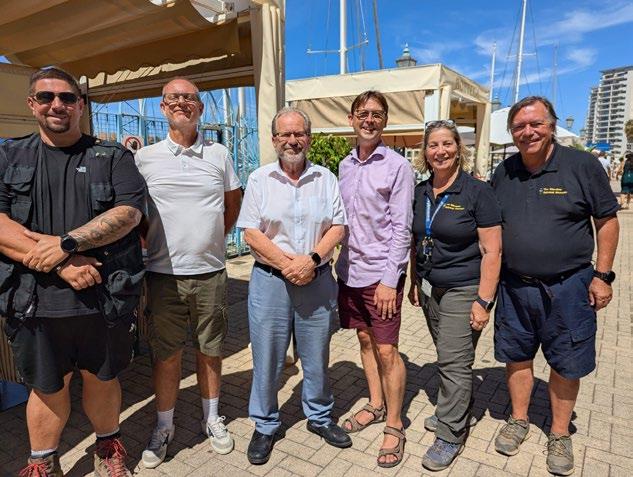
The Minister for Business, the Hon Gemma Arias-Vasquez, said: “We are delighted to share the full schedule for our first ever Business Conference in London. It offers the opportunity to promote Gibraltar’s strengths as a jurisdiction of choice, while building new links with the UK business community. The energy and interest we have already seen has been fantastic, and I encourage anyone with an interest in Gibraltar as a business destination to get in touch with us and secure their invite.”

• Tuesday 21 October 2025, 5:00pm to 9:00pm
• Oxo Tower, London
• Tickets: Event is by invitation and registration only
• Cost: Free of charge for UK-based attendees, £100 for Gibraltar-based attendees (save for sponsor delegates)
Anyone wishing to attend should contact the Department for Business at business.support@gibraltar.gov.
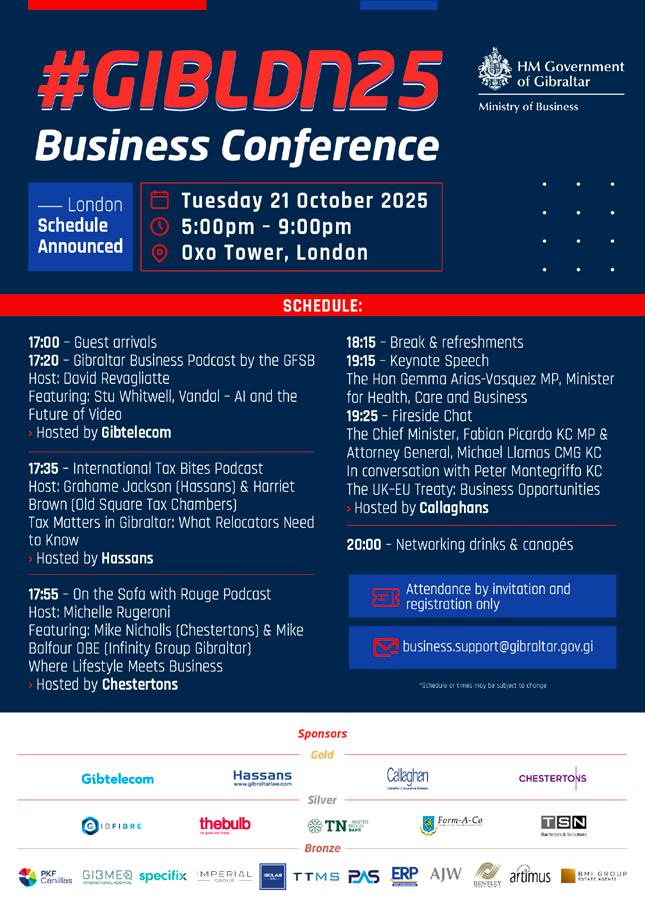



The Llanito language and its regeneration was discussed as part of a conference held in Brussels. The event titled ‘Regenerating Minority Languages through Lifelong Learning and the Arts’ was co- organised by Gibraltar House in Brussels alongside the representative offices of the Channel Islands, Isle of Man, Northern Ireland, Puglia, Norway, Scotland and Wales.
The conference brought together policymakers, academics and artists to discuss ideas and best practices in the area of language regeneration from respective jurisdictions and, where possible, take examples from the rich cultural heritage on display.
Representing the efforts to regenerate the Llanito language was Professor Brechtje Post from the University of Cambridge. Prof Post is an expert in phonetics and has been an integral part of the University of Cambridge team conducting ongoing research into Llanito. The same team has collaborated with the Government previously in the production of an exhibition and a booklet on Llanito last year. Davina Barbara of Gibraltar Cultural Services also participated. Prof Post and Mrs Barbara participated in a closed roundtable of experts where they shared the progress that has been made in Gibraltar regarding Llanito regeneration efforts. The roundtable was later followed by a public evening panel discussion where Prof Post participated in an exchange about ‘Creative Arts in Language Revitalisation’. There she had the opportunity to highlight the great work being done by Gibraltar’s many talented artists, writers and poets who express themselves and publish in Llanito. The many initiatives that the Government and Gibraltar Cultural Services have made to support Llanito language regeneration through the arts were also referred to.
The Deputy Chief Minister, The Hon Dr Joseph Garcia CMG, said: ‘’We are delighted that the Llanito language was featured in an event in the heart of Brussels. It is a further example of the commitment this Government has made towards the regeneration of Llanito. I would like to sincerely thank Professor Post for her participation at the event and the team at the University of Cambridge for all their efforts towards supporting Llanito regeneration and revitalisation efforts.’’

Minister for Equality, Employment, Culture and Tourism, the Hon. Christian Santos GMD MP, was invited to the University of Gibraltar to meet the new cohort of the Japanese study abroad group from the University of Chiba.
Minister Santos and the Minister for Housing and The University of Gibraltar, the Hon Pat Orfila MP, met with the students and discussed their experiences in Gibraltar. Minister Santos also took part in a Q&A
session where the students found out more about his role. The students thoroughly enjoyed the session where they had the opportunity to practice their English.
Minister Santos was pleased to speak to the group, especially as he has a personal connection with Japan, having lived and worked there for several years. He thanked Minister Orfila and the University of Gibraltar for their kind invitation to meet the students.

Joe Adamberry is usually the person who is doing the interviewing, but this time Joe is under the spotlight for the recent release of his book of poems. “I wouldn’t call myself a poet,” he says modestly, “and it's not a poetry book as such.”
Joe explains how the idea for the book developed when he retired from GBC (Gibraltar Broadcasting Corporation) as a producer in 2001. “It’s a book where I explore the rhythm of poetry, and I'm taking the coincidence of being a lifelong musician and the certain rhythm of the words that crept into my writing as I was jotting down ideas, and I discovered that even as far back as 50 years ago there is a rhythm particular to the way that I write.”
It was thanks to Joe’s daughter who realised that the poems were gathering dust who told him he should publish them. “I am friends with Gabriel Moreno, who's a local established poet, and I asked him whether he could give me an honest opinion if I curated them,” Joe explains. Much to Joe’s delight, Gabriel thought they were great and he even wrote a wonderful forward for the book.
There isn't a theme running through the book, but it does include poems in English, Castilian Spanish and Llanito. “The poems are graded by colour,” Joe says, showing me a copy of the book. “There is a coloured spine, and then the darker the poem or theme is indicated by a dark colour along the edges of the pages.”
It was around the time of the pandemic that Joe felt a duty as a writer to write uplifting pieces for the community. “The Chronicle very kindly published about eight or nine poems,” he comments.
It’s time to change again, but remember how you messed last time when you played our hand too early?
Start afresh and make a good hand with the cards that you’ve been dealt, remember in real life poker we don’t fold …we hold
In life poker we shouldn’t bluff, luck is what we don’t own and we need luck. Anyway... bluffing won’t impress the Almighty dealer... so hold them close to your heart and hope that when you get to make your call your hand will win.
It is pertinent that the book is getting published in the run up to his 80th birthday. “I always thought that if I ever was going to do anything significant with my writing, apart from getting published in the local media, it would have to be before my 80th, because that is a big milestone and you don't really know how long you're going to be on the planet after that,” he laughs.
Joe was born in Gibraltar, attended school here and although he had ambitions to become a musician he was told by his mother, who was very religious, that he should become a carpenter. “It was in the day of the 11 Plus, so I went to the interview board and they asked me what I wanted to be when I grew up. When they asked me why, I replied “because my mother said so and St. Joseph was a carpenter.”
This led to Joe being streamed into the technical college and all his artistic inclinations were suppressed and substituted by mechanics and technical drawing. “As soon as I started playing the guitar at 15, I
to global success as a singer and songwriter and Richard became a well-known GBC broadcaster. “We're still good friends,” Joe states.
Joe left London in 1969 to come back to Gibraltar where he got married and had his first son. “When I came back, the best work that I could find that was nearly tied to music was being the nightclub manager of the old Pigalle Casino, and I used to book the bands that played there.”
Nine months later, Joe formed his own band called Horizon and that lasted for twenty-five years. In 1980, an opportunity came up in the production department of GBC. “All I knew about television was I'd lived in the UK and I'd seen much better television than that available here,” Joe says. “I put in a proposal for a programme about how electricity was generated locally, without getting too technical, and that was accepted and then that developed into other programmes. I loved local history and my first series was called ‘Rock of Ages’ and then I moved into magazine programmes.” Joe continued to work at GBC for twenty-one years until 2001.
From music and broadcasting to poetry, Joe Adamberry’s life shows how creativity, rhythm, and community spirit can leave a lasting legacy.
Joe’s book, ‘Harmony Within’, will be available at BookGem and also in the Gibraltar Heritage Trust, with all proceeds going to the Calpe House community charity.
Jo Ward caught up with Joe Adamberry for a chat about his life and his new book of poems ‘Harmony Within’.
“When I was a musician back in the 60s, I used to write songs and base them on things that happened to me, my own experiences or images that I captured. For example, at a train station, when you’ve missed the last train and it's a cold, misty, winter night in London and you think that Dracula is going to step out of the trees.” It made me think that there is no place like an empty station, and that became a song and then I developed that into a poem.”
Joe reads me one of his lighter poems in a warm, smooth voice, rich with melodious tones.
Consider this- just when you think you have arrived, your journey hasn’t even started.
You look back and life has dealt the cards and left the table, taking the joker with it.
Time is nothing in the universe and your blip has still to be picked by the ‘other life’ radar.
You gambled and lost and when you won you lost again, what was the point of it all?
We have been given a chance to change our own destiny by being the best that we can be
Did you do that –are you doing it now- will you do it tomorrow?
Our actions and inactions have affected other people and will shape our footprint here on earth.
thought I had to pursue an artistic career as a musician because I liked and enjoyed it,” he tells me.
Fate stepped in when Joe and his band were playing at a local nightclub where they were spotted by an English gentleman who told them he could take them to England and find them work. Joe left Gibraltar at the age of 19 in November 1964 to pursue a musical career.
“He turned out to be an honest, real nice guy who had a car dealership in Portsmouth and enough money to be able to invite us into his home and let us share the loft while we looked for work, and eventually we became a functions band in Portsmouth called The Silhouettes.” Their benefactor entered the band into a nationwide competition for pop groups. “We won, and the reason was because we were singing Latin songs, using both languages, while all the other English bands were singing rhythm and blues,” Joe explains. “Plus, we wore frilly shirts, and it got us a twenty-two month residency at the Grosvenor House Hotel in London.”
“The prize for the competition was a recording contract with Philips, so we released a few records, the first one being called ‘One Big Kiss’ and the next one was called ‘La Yenka’, but then the recording company told us that our vocalist of the day was not sharp enough and that he was going a bit off key and we would have to replace him.” Joe knew Albert Hammond and Richard Cartwright, who had a duo in London at the time, so they were taken on as singers with the band. Albert, of course, went on
They were harvesting rich baboons
From golden cocoons in the streets of New York
Disciples of ‘Glasnost’ had a new bible They were preaching survival
At the crossroads of revival
But the markets were down In the streets of New York
The red dragon was getting frustrated It was complicated in the streets of New York Uncle Sam’s sacrificial lambs
Interrupted their burgers and sat on their hands While the world she waited
With her breath bated
Started making her own plans
The bankers they fretted
While common folk bed wetted
Until Washington regretted
The restrictions it had imposed
Mega rich tycoons desperate and hard nosed
Diversified their holdings before trading closed In the streets of New York




The Elm Valley Scooter Club’s charity ride from UK to Gibraltar an international ride of approximately 1,700 miles raised funds for two charities in the UK, as well as the Bosom Buddies Cancer Trust here in Gibraltar.
The seven riders set off from South Elmsall in Yorkshire, heading for Gibraltar on two Lambrettas & two Vespa’s. arriving here in Gibraltar in time to celebrate National Day. They were tired but happy to have embarked on this adventure and celebrated Gibraltar’s special day in style at Queensway Quay.
The seven members of the Scooter Club were interviewed on GBC “Gibraltar Today” with Jonathan Scott. They spoke about

how much they had enjoyed the beautiful views on their way to the Rock, Although low clouds in the Pyrenees, made the ride difficult at times, But Just like the Bosom Buddies cancer survivors, they too survived the trip.
They spoke about The Butter Cross in the Market Place in Pontefract which was erected in 1734 by Solomon Dupier, who had been a member of the Spanish garrison of Gibraltar in 1704 when the Rock was besieged by Sir George Rooke. Solomon Dupier was the man who indicated to the besiegers, that it was a good time to attack, as the garrison was at that time attending a church service. It proved successful, and Gibraltar became a British possession.”
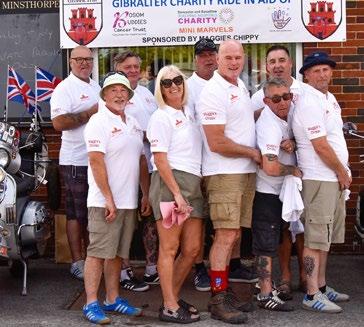


The chairperson of The Bosom Buddies Cancer Trust, Sonia Golt BEM said: Our connection to Pontefract will live in our hearts. Gibraltar’s history is the thread that runs from the Rock to the UK, We take this opportunity to thank you all for thinking of our charity.
Anyone wishing to contribute towards their incredible and successful feat, can support these worthwhile charities Donate via “Go fu nd me” every penny counts. They are hoping to surpass the £10,000 mark which they have already raised.
Thank you to the Elm Vally riders Pat Mulhern. Dean Howarth. Dave Binns. John Wesbroom. Pete Tilley. Andy Whalley & John Kitchin
Gibraltar Cultural Services, on behalf of the Ministry of Culture, and in collaboration with The Gibraltar Scouts Association, is excited to announce the return of Bonfire Night.
The event will take place on Wednesday 5th November 2025 from 6:30pm to 8:30pm at Little Bay Car Park and will include a competition for the ‘Best Guy’, entertainment and food stalls.
We encourage the community to get creative and take part by making their own ‘Guy’. A £5 participation fee applies, with all proceeds going to GBC Open Day.
Entry forms and competition rules are available to download at www.culture.gi/forms.
For more information, please contact the GCS Events Department at 200 67236 or info culture.gi


Nominations for the Ladies that Rock the Rock awards are officially OPEN to the public!
This is your chance to celebrate and recognise the extraordinary contributions, dedication, and spirit of the women who make Gibraltar a better place.
Do you know a woman who deserves the title a 'Lady That Rocks the Rock'? Someone who inspires you, leads by example, or works tirelessly behind the scenes?
Don't wait! Click the link below and make your voice heard!
Let's give these phenomenal ladies the recognition they've earned.

https://tinyurl.com/LadiesthatRock - Feel free to share!
Tel: +35020073669
Email: TheLadiesThatRock@gmail.com

OVER 80 POETRY LOVERS ATTENDED THIS INCREDIBLE SUCCESSFUL EVENT IN AID OF THE BOSOM BUDDIES CANCER TRUST, WHICH WAS HELD AT THE MEDITERRANEAN ROWING CLUB ON THURSDAY 25TH SEPTEMBER.
The event started with a cheese and wine welcome party. The evening was hosted by local playwright Julian Felice. Twelve local poets and two guitarists entertained with their creative music and poetry. It was a very emotional and entertaining evening. The evening concluded with Julian and Rebecca working the audience for the art auction, which brought in plenty of bidders for the paintings on offer. Four paintings on display were donated to the charity by Pauline Gomez a cancer survivor herself, and member of Bosom Buddies.
Kenneth Mckintosh flew over from UK specifically to participate in this event, well known artist James Foot and top local artist Karl Ullger also sold their paintings raising a substantial amount for the Bosom Buddies charity.
Thank you to everyone who worked so hard to make this event the great success it was. Also, thanks to those who joined in the art Auction, so generously bidding for the art which was so kindly donated to this worthy cause.
Congratulations to Chairperson Sonia Golt BEM, and her team, for once again making sure this was a top class event. The Bosom Buddies' events never fail to impress. For the past 20 years the charity has continued to work hard to raise awareness and funds for this worthy cause.
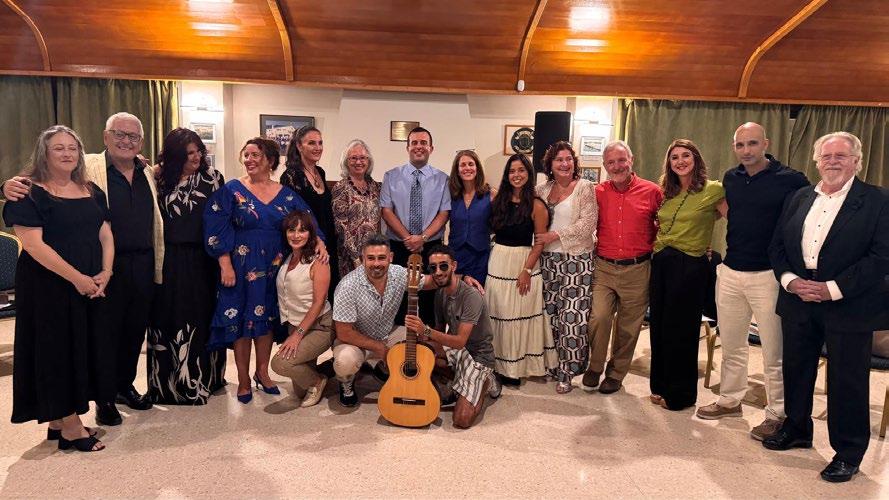

She was born in India because her parents went back there to celebrate the arrival of the first grandchild to both of their families, and as it turns out her grandfather was the one who inspired her to play guitar as he was a guitar player himself.
She has a strong social media following of over 23,000 (monthly) on Facebook and over 67,000 followers on Instagram (figures correct July) and regularly posts clips of herself on Instagram (aanika_ pai), playing advanced Rock guitar with all the skills and panache of players twice and three times her age. She is what we might call a child prodigy. An instrumentalist who can and will no doubt go places, as name artists are becoming increasingly aware of her talent and want her to guest in their shows.
I had a chat with her in the presence of her dad Avi Pai who manages her budding future career (it’s very possible) and he always ensures that it doesn’t encroach on her school studies.
He tells me that she is a wonderful allround student who also takes classical guitar lessons as well as Rock guitar lessons online. Preparing her to be a future star is hard work, which she copes with easily, as she has a talent for retaining information and is a fast learner.
Aanika said that for her end of term school concert at Westside, she learnt a complex Rock classic in a single day. That requires talent and persistence. When I saw a clip of that performance I was bowled over.
“I started playing guitar at the age of eight, although serious playing I guess around last year,” she said.
“I took piano lessons for about a month. At the beginning my fingers were so stiff that I couldn’t play guitar properly.”
“I started to like Rock and Metal because my dad is a big fan of that genre, but I like it as well, so I started playing all that stuff until my guitar teacher felt it was time to broaden my musical vocabulary into Fusion, Jazz and other genres and guided me into music from Van Halen (Eddie Van Halen now deceased, was one of the first guitar heroes of modern Metal / Rock).”
“He is now getting me into Allan Holdsworth and Jazzier material, although Jazz is not going through my head yet.”
From Joe Satriani’s repertoire (a long-standing guitar hero), she played one song at the school concert (‘Always with You, Always with Me’) and she also mastered another of his classics ‘Surfing with the Alien’.
She played that last one at NAAM (an important week-long guitar market held at Anaheim, California USA).
“During the market I was playing at the Tagima booth featuring ‘Tagima’ guitars (a Brazilian brand who endorse Aanika).
I played on that Tagima booth on their small stage on three days.”
She also played over here in the finale of the ‘Back to the Classics’ concert which was reviewed by Chronicle.
“I played with some amazing musicians and I had a lot of fun. It was a great stage show.”
Aanika featured in the tribute to ‘Queen’ which allowed her to solo the legendary Brian May guitar parts at the climax of ‘Nothing really Matters’.
She traded guitar licks with some our finest Rock players and it was truly spectacular. I turned her attention to the recent guitar concerts that she performed in New York, at which point her father Avi offered to fill in the pertinent details.
12 year old Aanika Pai has been playing guitar for only four years and she already possesses dazzling skills and talent well beyond her years.
“Kids Rock for Kids.com have been running this talent showcase for four years now,” Aanika said.
“They encourage kids from all over the world to collaborate with each other.”
“I came across one of their videos on Instagram and they featured a bunch of very talented kids from the US so I sent them a video of my daughter, asking how she could get involved in their shows.”
“They looked up her profile and they were really impressed, so they told us about the concerts in mid -July and that they would try and place Aanika there.”
The concerts were held over four days in New York and Aanika played in three shows.
She smiled as she remembered: “We had twenty minute slots and we played the songs that we had rehearsed and it was great fun.”
I had seen a clip of one performance elsewhere when Aanika’s guitar strap came undone just as she was going to start her solo - the potential for a disaster- that performance was in Toronto and she calmly picked up her guitar as the band continued.
She did not seem overly worried about the incident, which shows how mature and centred she is for her age. I had to know what inspires her to carry on the hard work of mastering guitar to such a high level of dexterity.
“I just like playing Rock and now I’m also playing fusion I like Guthrie Govan and Matteo Mancusso (an Italian guitar wizard who is one of the finest players currently on the scene) they inspire me to play better and I follow them because I like their kind of style,” Aanaika said.
“Over the last year or so I have been trying to get a song out there.”
“Something of my own composition. I have recorded a few intros and other bits but I haven’t finished any song just yet.”
She practises at home at low volume and records onto a programme called ‘Cubase’. She uses an Orange amplifier, a well-known British Rock brand.
Internationally, Aanika has played in India, Canada and the US and has already notched up nearly 20 shows, which is modest but still a huge ask from a 12-year-old.
She enjoys instrumentals more than accompanying Rock singers. Her father added that although it may look easy, Aanika has put in all in the hard work, studying different styles and techniques so that she can perform really well from memory.
Her guitar tutor constantly exposes her to different styles so that as she grows, her palette grows too, by turning her into a well-rounded musician in the future.
She is currently on grade six of classical guitar with two more grades to go yet, but she remains optimistic and confident.
As summer flew on, Aanika took part in a guitar camp in Sweden at the end of July and also featured in a show in London, all that before the school term started again in September.
Rest assured that she will continue to improve and impress, which will make Gibraltar very proud.
She posts updates regularly on Facebook and Instagram: @annika_pai
30 Sea Cadets from Training Ship (TS) Dreadnought, the Greenwich, Deptford and Rotherhithe Units from London, together with 15 volunteer staff members, travelled to Gibraltar in August for a landmark summer camp – the first visit of its kind by a UK Sea Cadet unit in decades. The expedition combined advanced training, ceremonial events, and a celebration of a shared enduring naval heritage.
This historic visit commemorates the deep and longstanding ties between Greenwich, the heart of naval tradition, and Gibraltar, a cornerstone of British maritime history. A poignant highlight was a wreath-laying ceremony at Gibraltar’s Trafalgar Cemetery, honouring the fallen of the Battle of Trafalgar including Vice-Admiral Lord Nelson, whose body was brought home to Greenwich via Gibraltar after the battle in 1805. Many of the injured from the battle saw out their lives as Pensioners of the Old Royal Navy College, Greenwich Hospital and are buried there.
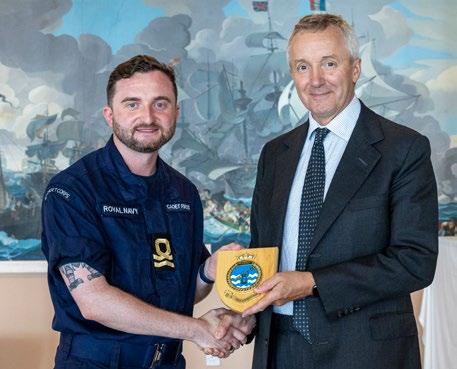
The ceremony was attended by several distinguished guests, including the Hon Gemma Arias-Vazquez, Minister for Health, Care and Business, and Commander Mark Fitzsimmons from Headquarters British Forces Gibraltar, marking the significance of the
During the height of August, eight cadets and two staff members from No.2 Overseas (Gibraltar) Squadron ATC travelled to RAF Halton in the UK to attend the annual Wing Summer Camp, joining cadets from multiple other squadrons across the Norfolk and Suffolk Wing.
Highlights of the action-packed week included visits to RAF Hendon Museum and RAF Trenchard, giving cadets a greater understanding of RAF history and heritage. Adventurous training on the high ropes and low ropes courses challenged cadets to step out of their comfort zones, building both confidence and teamwork.

cadets' role as ambassadors of naval youth and heritage. The ceremony was led by Father Daniel Hernandez.
Commanding Officer Lt. Scott Hanlon told the Governor, His Excellency Sir Ben Bathurst KCVO, CBE, who attended a Reception in honour of the visit: "TS Dreadnought is proud to represent both Greenwich and the wider Sea Cadet Corps on this historic visit. This is more than a summer camp – it’s a living connection to the past, and a bold step into the future for our cadets. It reinforces their identity as part of a centuries-old maritime tradition."


While in Gibraltar, Royal Marine Cadets trained at Buffadero Training Camp, undertaking fieldcraft and adventurous activities unique to the territory’s rugged terrain. Sea Cadets were accommodated in Devil’s Tower Camp, living and training alongside serving personnel, and spent time with the operational front-line Royal Navy Squadron.
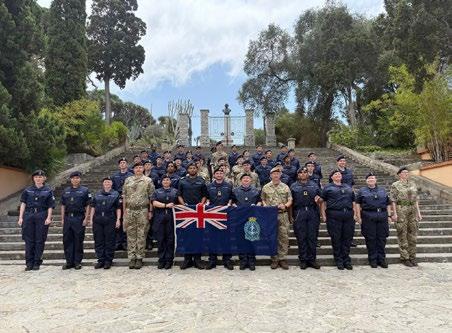
The cadets’ experience was further enriched by the leadership of unit staff that include a former cadet of TS Dreadnought who is now a serving Royal Navy Lieutenant and a former Royal Navy Chief Petty Officer who previously lived and served in Gibraltar – this helped to bring personal insight into the region’s strategic and cultural importance.
The visit strengthens the cadets' connection to the Royal Navy and Royal Marines and raises the profile of the Sea Cadet Corps and Royal Marine Cadets. For many, it was their first experience of military life abroad – but for all, it was a formative and unforgettable chapter in their journey with Sea Cadets.
The dream one day is to establish a Sea Cadet Unit in Gibraltar …


The third quarter of 2025 has been steady but encouraging for the Gibraltar property market. Summer is always a quieter period, but confidence is building following the announcement of the agreement in June.
BMIGroup Managing Director Louis Montegriffo shared his perspective on sales, rentals, cultural shifts, and the outlook for the months ahead. His reflections offer a clear picture of a market that is stabilising and setting the stage for growth.
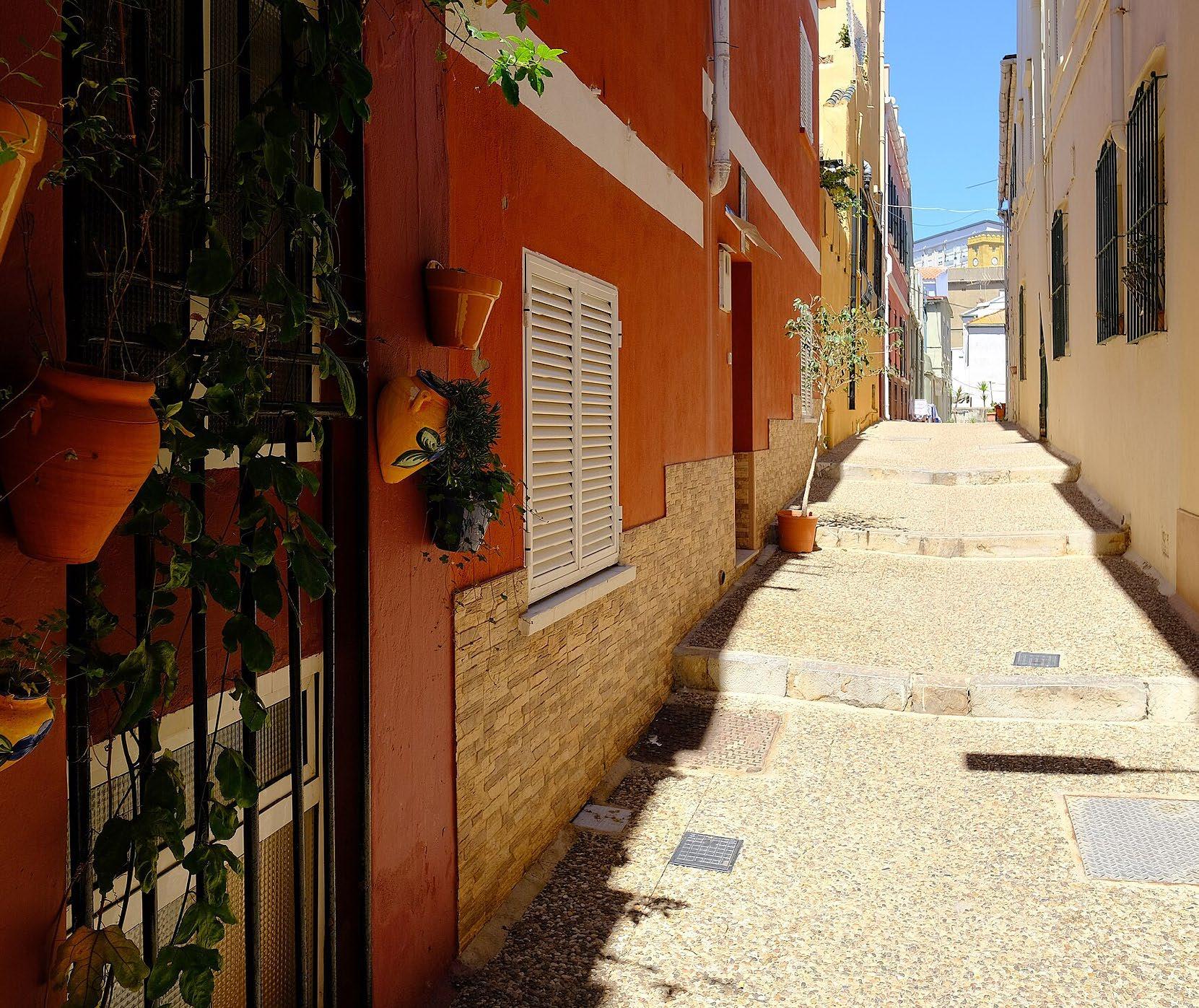
The summer months didn’t bring the surge some expected after the June announcement. Louis admitted, “strangely enough and boringly enough, not a lot has happened because we've had summer in between, obviously. I think the expectation when the announcement of the agreement came through in June was that things would dramatically change immediately. We would suddenly see a booming market coming into play.”
Instead, the market stayed calm, though rental demand remained strong. By September, however, interest in ready-to-move-in homes began to pick up. As Louis put it, “We are likely to see some of those green shootsof recovery… and we've already seen that in the first few weeks of September.”
Local buyers continue to drive the affordable housing and lower-end segments, but
the real change (as discussed and stated by BMI) is coming from international demand. Gibraltar has always attracted wealthy clients in finance and gaming, but Brexit unsettled that trend. With stability restored, Louis believes Gibraltar is back on firmer ground.
“With an agreement coming into play, I think what we're going to experience a lot of what has made Gibraltar Inc successful in the past, but with a huge degree of stability, of certainty, and of knowing where we are going to be in the longer term,” he explained. Conditions elsewhere are also pushing people to look our way. “With the instability and insecurity that there is in the UK, on taxation etc., more people are looking at jurisdictions like Gibraltar and we can now provide a degree of political and economic certainly, that has previously not existed – this is huge in terms of our prospects moving forward”
This renewed confidence is likely to strengthen demand in mid to high value developments such as Ragged Staff Wharf, King’s Wharf, and Midtown.
For local buyers, little has changed. Affordable housing and lower-end properties continue to move steadily, as they are largely driven by Gibraltarians themselves. The real impact is expected to come from international demand.
As Louis put it, “The biggest issue we had, up until the 2016 Brexit referendum, was always the element of uncertainty. Brexit brought this even more into play! With an agreement coming into play, I think we are firmly going to enjoy the benefits that stability, certainty, and knowledge will bring for the longer term.”
That stability, combined with political and economic uncertainty in the UK, is likely to drive more high-value clients towards Gibraltar. Louis highlighted that “the instability and insecurity that there is in the UK, and particularly the risk of high taxation, and other relating factors affecting high value residents will most certainly see an influx of new HNWI’s seeking to take up residency on the Rock.
Louis is adamant that the very ingredients that have made Gibraltar such an attractive proposition since the start of its Financial Services and E-Gaming history will only now be further underpinned and make for an almost perfect combination of factors taking our jurisdiction to new heights, economically.
With growing interest from wealthy individuals and family offices, Louis expects residency-linked property rules to evolve. “Properties (of the smaller nature) that may historically have been approved for high-value, Cat 2 and HEPSS clients, are being looked at on a case-by-case basis” and may no longer be approved on the basis that the threshold will be increased for status approved properties. This in Louis’ view is a justified scenario to be applied by the Finance Centre, but applying the policy should be done sensitively and with caution.
He also pointed out that financial thresholds applicable to Cat 2 and Hepss clients may be rising. “I would imagine that the finance centre is already looking at changing those thresholds too, the value that one would need to declare in so far as net worth to be able to apply for residency in the Cat 2 or Hep status in Gibraltar will rise.”
For those who qualify, the benefits remain hugely significant. As Louis summarised, “English speaking, English legal system, regulated, in Schengen, access and freedom of movement into Spain. These are huge benefits.”
The past two years have been characterised by caution, with buyers pulling out of deals and confidence dipping. “We have seen a number of fall-throughs, and I think that's another indicator of the market being a bit nervous,” Louis explained.
Property values have fallen by around five per cent annually in recent years, with some areas seeing drops of up to 30 per cent. Yet Louis is clear that this should be seen in context. “That is to say that we can't ignore the fact that the market grew by up to 50 to 100% between 2020 and 2022, so it's not really been a recession but more of a realignment.”
Signs of renewed confidence are now emerging. “We're starting to see that change, and I expect that confidence to come in soon, we are already starting to see that now in September, October.”
For buyers and investors, Louis sees opportunities across the market. High-value waterfront developments such as Ragged Staff Wharf and Cormorant Wharf have maintained strong prices at £10,000–£11,000 per square metre. Investors are drawn to these areas, anticipating strong growth once the agreement’s impact is fully felt.

Elsewhere, significant discounts are available. “There are situations we've had where we've seen some properties come down by as I said before 15 to 20 per cent in developments that people consider a good value.”
On the rental side, yields had dropped from five per cent to closer to four per cent, but strong demand means well-chosen buyto-let investments still make sense. Louis offers a note of caution, though: “I've always expressed some caution with respect to studio markets and small units. I continue to do so. I'm not saying that there isn't a space and a market for them, I would just say that if you're looking for investment, do so in segments where there isn't oversupply.” There is an element of over-supply at present and this is principally driven by off-plan units that have been sold to speculators and in the main within the Studio segment.
Commercial property has remained surprisingly steady. “Where we may not have seen property growth in so far as value is concerned with the climate being a little weak, we havenot seen any exits as such,or companies leaving the jurisdiction. They've all stayed,” Louis observed. This says a great deal and almost relates to the example that High Value rates per sqm achieved in 2022 remain in place for front line prime properties.With commercial property the key factor to take is that they remain and they are seeking to grow, and we are experiencing this with our commercial tenants. It’s a good sign.!
The retail sector faces challenges with the introduction of the transaction tax, but also opportunities. Louis sees promise in the fact that new high-value residents will spend more time and money in Gibraltar. “We’re no longer a brass plating jurisdiction, far from it, these are individuals who are actually spending time in Gibraltar and therefore spending money, so I think the retail business model has a great deal of scope.”
Louis acknowledged cultural changes as Gibraltar grows. At 52, he reflected, “When I was a teenager Gibraltar was a very, very different place to where it is today… the dynamic and the culture of it has changed dramatically.”
Some young Gibraltarians may prefer to buy in Spain, where prices are lower. “Why would one spend two hundred fifty thousand to three hundred thousand pounds on an affordable housing property… when I can spend two hundred thousand euros for a townhouse or semi-detached villa in Alcaidesa?” Louis reported hearing from clients.
This trend, however, is unlikely to significantly impact Gibraltar’s rental market, which is primarily driven by newcomers and gaming professionals. As Louis pointed out, “75% of employees in the gaming
industry already live in Spain and work in Gibraltar,” and with the new agreement, they can now cross the border more easily.
Looking further ahead, Louis compared Gibraltar with small finance-driven economies like Monaco and Singapore. He highlighted that in Monaco, “only nine and a half thousand of the 38,000 residents are original Monegasque’s ,” raising questions about how Gibraltar might evolve.
What sets Gibraltar apart however is its commitment to locals through affordable housing. Louis called this “massively important for the local market,” stressing that it is vital for Gibraltarians to make use of these opportunities to ensure a balanced future.
Entering the final quarter of the year, Louis struck a note of measured optimism. “Much of the same for now,” he said, warning against attempts to “force the market” and insisting instead that “the market will always do what it needs to do.” “Let the market drive the market”.
He noted that prices appear to have stabilised. “The downturn in prices across the board has stopped and paused and I think we're at the bottom of that curve.” While there may be no “wow and magnificent” impacting developments in the immediate months, Louis expects the market to strengthen steadily through 2026.
Studios and one-bedroom apartments may feel the impact, as some tenants who once rented in Gibraltar to avoid delays may now feel comfortable living across the border. However, Louis stressed that families who want to fully benefit from life in Gibraltar would continue to need larger homes.
The third quarter of 2025 has been steady, with signs that confidence is slowly returning. Sales are still moving at a slower pace, but there are openings for buyers and investors across different parts of the market. Rental demand remains strong, offices have held their ground, and shops and restaurants look set to gain as more high-value residents settle in Gibraltar. Cultural and demographic changes will play their part in shaping the market, but the continued rollout of affordable housing schemes is helping to make sure local buyers are not left behind.
As Louis put it, “We've been able to breathe easier since June and we now take the opportunity if you like to plan forward on what generally everyone believes will be a positive next few quarters and years to come.”
To watch the full conversation between David Revagliatte and Louis Montegriffo, watch the latest interview in full on https:// www.bmigroup.gi/quarterly-updates For regular insights and updates, make sure you follow BMI Group on social media.


Walk into any beautiful home and one thing instantly draws your attention - not the size of the kitchen island or the texture of the flooring, but the art on the walls. Art has the uncanny ability to anchor a room, add personality, and make a house feel like a home. More than just decoration, it’s a reflection of taste, heritage, and the stories we choose to tell in our living spaces.
In recent years, the role of art in the home has shifted from afterthought to essential. Homeowners are treating art not only as an investment but also as a daily source of inspiration and joy. And, just like furniture or lighting, it’s a design choice that requires thought, balance, and a touch of daring.
Art brings individuality into interiors in a way few other elements can. A striking canvas in the living room or a carefully chosen ceramic on a bookshelf instantly communicates something about the homeowner’s character. Interior designers often describe art as the “final layer” in a space—a finishing touch that pulls the story of the room together.
Whether it’s a bold abstract piece that commands attention or a delicate pencil sketch that rewards closer inspection, art is a signature of self-expression. The trend is less about matching works perfectly to a room’s colour palette and more about choosing pieces that spark an emotional connection. After all, your home is your sanctuary—why not fill it with pieces that make your heart leap?
The way we display art has also evolved. The gallery wall—a collection of framed prints, photos, or paintings—remains a firm favourite. It’s flexible, easy to update, and allows for eclectic mixing. But equally popular now is the singular statement piece: one large work that becomes the centrepiece of a room.
A dramatic abstract in the dining room, a serene seascape in the bedroom, or a vivid portrait in the hallway can transform not only the energy of the space but also how we use it. Designers encourage homeowners to think about scale and proportion—large rooms can handle oversized pieces, while smaller spaces might benefit from diptychs or triptychs that break up visual weight.
Beyond the walls of international auction houses, a fascinating shift is happening in the art world. More homeowners are looking closer to home, supporting emerging and established artists in their own communities. The result? Interiors that feel authentic and deeply rooted in place.
Buying local art adds cultural resonance to interiors. A home in a coastal town might feature seascapes from a nearby painter; an urban apartment may lean into street art photography from the neighbourhood. By investing in local talent, homeowners are not only enriching their own lives but also sustaining the creative ecosystems that make our cities and towns unique.
Modern interiors are increasingly eclectic, and art follows suit. Paintings and prints are now complemented by sculpture, textile art, photography, and even digital installations. A woven tapestry can add warmth and texture to a minimalist living room, while a sleek bronze sculpture brings gravitas to a contemporary hallway.
Mixing mediums adds depth, turning interiors into multi-sensory experiences. Light, shadow, and texture become part of the design. More homeowners are experimenting with placing three-dimensional works in spaces where we might expect only flat art— like a sculptural piece on a kitchen counter or ceramic art beside the bathtub.
Design psychology suggests that the presence of art in the home can elevate mood, inspire creativity, and even promote a sense of wellbeing. Colours, shapes, and imagery interact with our subconscious, reminding us of places we love, people we cherish, or aspirations we hold close.
One homeowner described walking past her hallway painting each morning as “a moment of grounding before the day begins.” Another spoke of the comfort found in a familiar sketch inherited from a grandparent. Art makes us pause, reflect, and reconnect with ourselves—something no amount of minimalist cabinetry can achieve.
While art is emotional, there are practicalities to consider. Lighting is key: natural daylight changes how colours are perceived, while strategically placed spotlights can bring new life to a painting at night. Frames matter too, often acting as extensions of the artwork—sleek black metal for contemporary photography, ornate gilt for classical portraits, or simple oak for Scandinavian calm.
Budget plays a role, but curating art doesn’t have to mean breaking the bank. Affordable art fairs, online galleries, and student shows are excellent places to start. Even prints or limited-edition photographs can add originality without the price tag of a canvas masterpiece. The golden rule? Buy what you love, not what you think you should own.
At its best, art isn’t a backdrop to life at home—it’s the heartbeat. It defines how spaces feel, how we use them, and how we invite others into them. Just as no two homes are alike, no two art collections are the same. And therein lies the beauty: each piece tells a story, and together those stories become the tapestry of our lives.
So, whether you’re considering a statement canvas, a local artisan’s ceramic bowl, or even your child’s framed artwork, remember this: art in the home is less about perfection and more about connection. It’s about creating spaces that reflect not just where we live, but who we are.



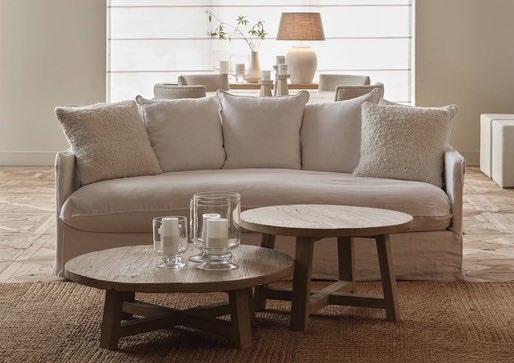
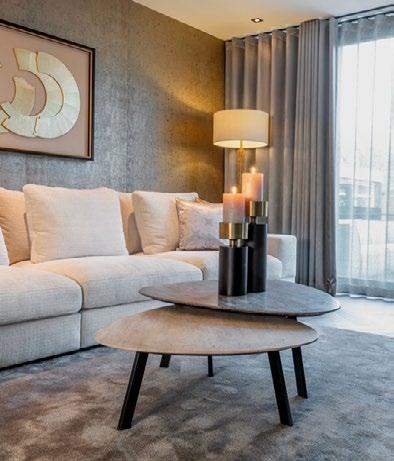


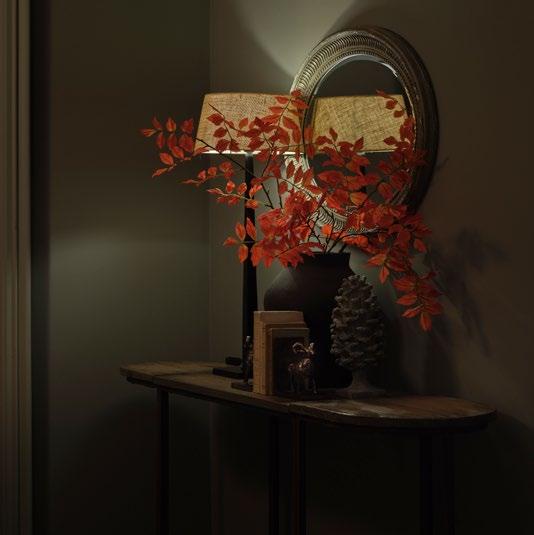

Recognising the importance of sustainability in our world today, Keystone Residence is set to become Gibraltar’s first Nearly Zero Energy Building.
This will include green areas, gearless lifts, solar tiles, hybrid water heaters, and shower heat recovery systems. The rooftop will house a beautiful pool with stunning views, as well as various relaxation areas and a covered hot tub. But it doesn’t stop there; within each property, the focus on sustainability will continue with energy efficient lighting, dual flush systems and other considerations.
Also, we have designed Keystone Residence with the aim of selling primarily to end users. We welcome buy-to-let investors too but most recent developments in Gibraltar have focused on the apart-hotel style, with a whole building of studio apartments specifically targeting them. However, we offer property types ranging from studios to four-bedrooms, and a luxurious penthouse, alongside fantastic amenities for the enjoyment of families as well as professionals looking for a base in Gibraltar.
We are about to break ground, and are aiming for the entire build to take no longer than 24 months. We have full planning permission and we are fully funded. We have partnered with a renowned international contractor and are raring to go. We are excited to bring a much-needed level of sustainability to Gibraltar!





You can find further information, including latest availability, property specifications and floor plans by visiting our dedicated website: www.keystone-residence.info
Contact us for further information on +350 200 64040, email info@propertyzonegibraltar.com, or visit our office at 36 Ocean Village Promenade to see our full availability


As the days shorten and the temperature dips, our homes become more than just a place to rest, and they transform into havens of warmth and comfort. Autumn and winter are the perfect seasons to layer up, not only with our wardrobes but also within our interiors. With just a few simple additions such as cushions, throws, and lamps, you can create a cosy, welcoming sanctuary that invites you to curl up and relax.
One of the easiest ways to update your home for the cooler months is by introducing cushions and throws. Think of them as the knitwear of your living room: practical, stylish, and endlessly versatile. Opt for tactile fabrics such as velvet, wool, or chunky knits, which add both texture and warmth. Mixing different sizes and shapes of cushions also brings visual interest and depth to your sofa or bed.
Throws are equally transformative. Draped over an armchair or neatly folded at the end of a bed, they offer instant comfort and a touch
of luxury. Neutral tones like greys and creams exude understated elegance, while rich hues, such as burgundy, forest green, and mustard, evoke the earthy palette of the season. The key is layering, much like bundling up in your favourite scarf and coat.
As natural daylight fades earlier, lighting plays a crucial role in setting the mood at home. Overhead lighting can sometimes feel harsh, so consider adding table and floor lamps to create pools of soft, inviting glow. Lamps with warm-toned bulbs mimic candlelight, encouraging relaxation and calm.
For extra atmosphere, look to lampshades in natural fabrics like linen or pleated paper, which diffuse light beautifully. Don’t be afraid to experiment with multiple light sources— placing a lamp in a shadowy corner instantly changes the energy of a room. Fairy lights or LED candles can also enhance that cosy ambience without overwhelming the space.

Cosiness is as much about feeling as it is about aesthetics. The Danish concept of hygge, celebrating comfort, simplicity, and togetherness, offers inspiration. By adding layers of textiles, soft lighting, and thoughtful accessories, you’re creating not just a stylish space, but an environment that nurtures wellbeing during the darker months.
Even small updates can have a big impact. Swapping out summer cushions for warmer textures, placing a throw within easy reach of the sofa, or adding a lamp to a reading nook instantly makes the home more inviting.
As we retreat indoors to escape the chill, these little details transform our homes into snug retreats. So, light a lamp, pile on the cushions, wrap yourself in a throw, and embrace the season with open arms - because winter is best enjoyed when your home is warm and welcoming.

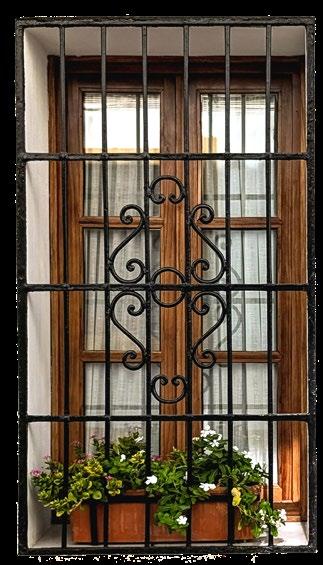



This isn’t about stark spaces or strippeddown coldness. Instead, it’s about light, balance, and the subtle fusion of old and new — where Gibraltar’s layered history meets the clean lines of contemporary Mediterranean design.
Minimalism in the Mediterranean takes its cue from the elements: whitewashed walls that reflect the sun, natural stone that stays cool underfoot, and spaces designed to blur the line between inside and out. The look feels effortless, airy, and calm — exactly what’s needed in a territory where sunlight streams through windows for most of the year.
But in Gibraltar, this pared-back aesthetic takes on a deeper resonance. Rather than erasing the past, homeowners are choosing to integrate the Rock’s rich heritage — Moorish influences, colonial architecture, even hints of Andalusian vibrancy — into their modern homes.
Walk into one of Gibraltar’s recently refurbished homes, and you might find:
Restored encaustic tiles in hallways, paired with minimalist furniture in pale oak or steel.
Traditional wrought iron balconies repainted in sleek monochromes, framing sliding glass doors that lead to uncluttered interiors.
Moorish-inspired archways kept intact, their curves contrasting beautifully with the rectilinear simplicity of modern kitchens.
These small details ensure that the past isn’t lost — instead, it becomes the character that anchors a minimalist space.
Mediterranean minimalism is all about outdoorsy decor, a concept that focuses on lots of natural light, which is a key feature of Mediterranean interior design.
You can implement the idea by installing large windows with light coverings (both in terms of color and fabric) to allow in maximum sunlight. Ditch walls for sliding glass doors wherever possible, and incorporate an open-floor layout. The effect can be enhanced by leveraging the light-reflecting properties of strategically placed mirrors and light wall colors.
PERCHED AT THE CROSSROADS OF EUROPE AND AFRICA, GIBRALTAR IS A PLACE OF STRIKING CONTRASTS: LIMESTONE CLIFFS RISING OUT OF THE SEA, NARROW LANES WINDING PAST GEORGIAN TOWNHOUSES, AND A CLIMATE THAT CALLS FOR COOL, AIRY LIVING. IT’S NO SURPRISE THAT THE TERRITORY’S HOMEOWNERS ARE EMBRACING A NEW DESIGN TREND THAT FEELS TAILOR-MADE FOR LIFE ON THE ROCK: MEDITERRANEAN MINIMALISM WITH A HERITAGE TWIST.
Talking about Mediterranean minimal light fixtures, rattan chandeliers, small lanterns, and perforated metallic globe scones are all wonderful options to introduce the ultimate vintage touch.
A common thread across these homes is the use of natural textures. Lime-plaster walls, raw stone accents, linen upholstery, rattan light fittings — all of them connect back to the Mediterranean landscape. These choices pair seamlessly with modern comforts: underfloor cooling systems, smart lighting, and discreet storage solutions that keep clutter at bay.
The result? Interiors that are calming yet deeply rooted in place.
Colour is where the Gibraltar slant really emerges. While minimalism often favours whites and neutrals, here you’ll often see:
The deep blues of the Strait reflected in statement walls or ceramic vases.
Sun-bleached terracotta shades that nod to Andalusian courtyards.
Pops of British heritage hues — deep green cabinetry, or rich navy in textiles — a subtle nod to Gibraltar’s colonial past.
This creates a palette that’s both understated and unmistakably local.
As Gibraltar continues to evolve, its interiors are showing how heritage and modernity can coexist beautifully. Mediterranean minimalism, layered with historic detail, isn’t just a passing trend — it’s a style that feels timeless, authentic, and uniquely Gibraltarian.
After all, the Rock has always been about balance: between cultures, between continents, between past and present. Now, its homes are reflecting that same harmony.
What the style is;
Earthy: with whitewashed walls and tiled floors
Ornamented: with elaborate tiling and richly patterned textiles.
Refreshing: with rough-hewn wood, terracotta, and leather.
What the style is not;
Trendy: the look is about classics that stand the test of time
Fussy: the style can be formal but never compromises comfort.
Mass-produced: the design is all about handmade items.





Minimalism provides the perfect canvas for Gibraltar’s heritage to stand out



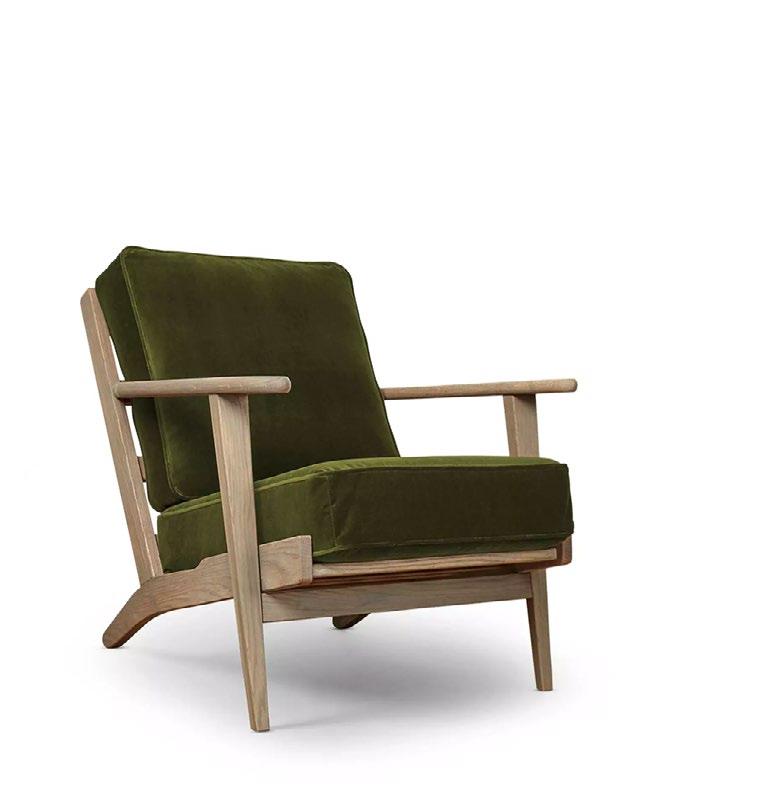
Biophilic design is rooted in the idea that humans have an innate connection to nature, which positively affects our mental and physical health. By incorporating natural elements such as greenery, sunlight, water features, and organic materials into indoor spaces, biophilic design creates a harmonious balance between the built environment and nature. In Gibraltar, where outdoor spaces are highly prized and nature is close at hand, this design approach feels particularly fitting. By bringing natural elements indoors, residents can enjoy the beauty of their surroundings all year round, even within the confines of their homes.
1. Natural Light: The Mediterranean sun is one of Gibraltar's greatest assets, so maximizing natural light is a key element of biophilic design. Large windows, skylights, and strategically placed mirrors can enhance the flow of sunlight into your home, creating a brighter and more inviting space. Natural light not only improves mood but also helps regulate the body’s circadian rhythms, promoting better sleep and overall well-being.
2. Indoor Plants and Greenery: Integrating live plants is perhaps the most recognizable aspect of biophilic design. Indoor plants like ferns, succu -
lents, and even larger species like the Fiddle Leaf Fig can transform a space into a lush, green oasis. In Gibraltar’s warm climate, certain Mediterranean plants such as olive trees and lavender can thrive indoors, adding both a natural and cultural touch to your home. Vertical gardens or "living walls" are another innovative way to incorporate greenery, especially in homes with limited floor space. These walls of living plants not only provide visual beauty but also improve indoor air quality by filtering pollutants.
3. Natural Materials: Incorporating natural materials such as wood, stone, cork, and bamboo into the interior adds warmth and texture to a space. Wood furniture, stone countertops, or
even a feature wall clad in natural slate can introduce tactile and organic elements to your home. In Gibraltar, limestone—a material synonymous with the Rock itself—can be used in various ways to bring a sense of place into your interiors.
4. Water Features: Water is a vital element of biophilic design, and the soothing sound of flowing water can have a calming effect. Small indoor fountains, water walls, or even aquariums can be added to your home to evoke a sense of tranquility. The sound of water, particularly in a Mediterranean environment, creates an oasis-like feel that’s perfect for relaxation.
5. Organic Shapes: and Patterns Incorporating shapes and patterns inspired by nature, such as leaves, flowers, and waves, can subtly evoke the feeling of being outdoors. You might consider adding these natural motifs in soft furnishings, wallpapers, or decorative accents. Organic shapes, as opposed to sharp or geometric ones, help create a flow that mirrors the fluidity of nature.
6. Natural Colours: A biophilic colour palette is inspired by the earth, sky, and sea. Shades of green, blue, terracotta, and stone dominate this approach, reflecting the natural beauty
surrounding Gibraltar. Earthy tones combined with pops of fresh green or deep ocean blue can create a soothing and cohesive look.
The benefits of biophilic interior design extend far beyond aesthetics. Studies have shown that exposure to natural elements indoors can reduce stress, enhance creativity, and improve cognitive function. It has also been linked to better air quality and an increased sense of calm. In a bustling environment like Gibraltar, where homes are often compact, bringing nature indoors can help create a sanctuary of tranquility.
1. Start Small: If you're new to biophilic design, start with simple changes. Add a few potted plants or change the layout of your furniture to maximize natural light.
2. Use Local Materials: Embrace materials that are native to the region, like limestone or Mediterranean woods,
to create a connection between your home and the surrounding landscape.
3. Create a Green Space: Even in smaller apartments, you can create a dedicated "green" space—a nook filled with plants, comfortable seating, and soft lighting for a nature-inspired retreat.
4. Play with Colours: Incorporate natural colours throughout your space to create a cohesive, biophilic environment. Consider repainting a wall in a calming shade of green or blue to instantly refresh your interiors.
Biophilic interior design is more than just a trend—it's a movement towards creating healthier, more connected living spaces. In Gibraltar, where nature is ever-present, this design philosophy feels particularly relevant. By embracing biophilic principles, you can turn your home into a serene haven that mirrors the beauty of the world outside, offering both aesthetic pleasure and a profound sense of well-being.
As Gibraltar continues to grow and modernize, biophilic design serves as a reminder of the importance of staying connected to nature, no matter how urban our environments become.

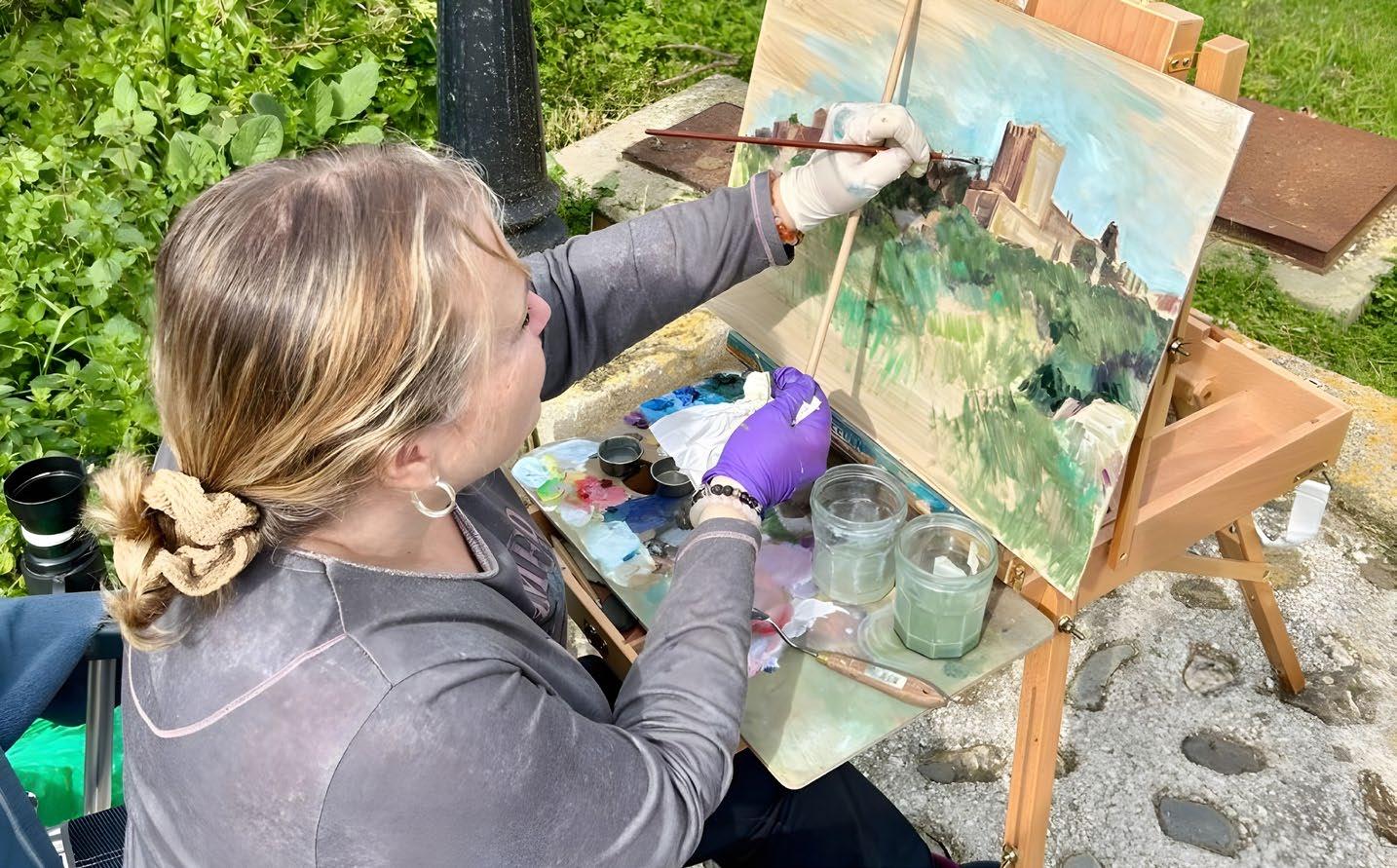
Gibraltarian artist, designer and art tutor, Geraldine Martinez, whose name is steadily becoming synonymous with creativity and community, has quietly left her mark on Gibraltar’s cultural landscape through three striking large-scale murals that many may not realise are her work. These public artworks, vibrant and full of character, enrich Gibraltar’s artistic heritage by blending storytelling with visual expression, turning everyday spaces into canvases of identity and pride. Now, after years of evolving as an artist, Gerry is finally fully embracing her creative journey with the opening of Gibraltar Artists Studio, a space dedicated not only to her own practice but also to fostering collaboration and inspiration within the local art scene in a creative hub that is as much about wellbeing as it is about art.
For Gerry, art has always been more than paint on canvas. It’s been a language, a refuge, and now, a tool to connect her community. When Gerry was 18, she left Gibraltar to study at the Chelsea School of Art in London, part of the prestigious London Institute, which included well-known names like Central Saint Martins, Camberwell, and the London College of Fashion. For a young artist from the Rock, it was both thrilling and overwhelming.
“I was very excited and honoured to be part of that art school,” she recalls. “But at the same time, I realised just how many people were trying to get into the fine arts industry.”
Like many young creatives, Gerry initially thought her future would lie in fine art, but the foundation course she pursued opened up another pathway: graphic design. It offered creativity and artistry, but also commercial viability. “I couldn’t see myself living hand-to-mouth, making paintings,” she admits. “Graphic design felt like a way I could still be creative but also sustain myself.”

She went on to complete a BA (Honours) degree in Graphic Design at the University of Plymouth, equipping herself with the technical and professional skills that later fed into her career as a designer and entrepreneur, but the pull of traditional art never really left.
Art runs in Gerry’s family, though in diverse forms. Her mother is a classically trained piano player who studied at the Conservatory of Madrid and her grandfather dabbled in art, copying famous artists. “I'm really into genealogy and I've since discovered that my great-grandfather was on the civil records as a ‘painter’, however we don't know what kind of painter, whether it was a house painter or whether he was a creative painter,” she laughs.
“From a young child I’ve always been artistic,” Gerry says. That natural pull towards creativity carried through the years, even as she carved out a career in design. Her daughter has inherited the same talents. She won a Heritage Trust award for her work while still young, echoing Gerry’s own recognition.“I came second in the Adult Section of the Heritage Trust Painting Competition in 2022, so she beat me to first prize.” Gerry’s daughter has chosen a career path in science rather than art. “She’s very artistic, and technically she was probably better than me at that age,” Gerry laughs. “But I never wanted to pressure her into an artistic career. Art has to be chosen freely.”
While Gerry built a career in design, she also began painting murals, and it is these large-scale public works that many in Gibraltar know her for today. Her colourful, emotive style has transformed walls and spaces across the Rock, offering a splash of joy to locals and visitors alike. In 2021 she won the Best Educational Project in the Gibraltar Cultural Awards for raising awareness of environmental concerns through her murals.
Her work can be found in Eurocity Passageway, where a set of three murals create a striking gallery in a public space, and in Irish Town Counterguard Tunnel, where two murals brighten the historic site. She also painted a vast mural on the Department of Education façade on Queensway, cementing her reputation as a leading muralist on the Rock. Beyond Gibraltar, she completed a set of five murals at the Dunas Hotel Resort in Tarifa, Spain.
But large-scale painting takes its toll. “It’s a big ask on your body, and I’m in my fifties now,” Gerry admits. “The last set at Eurocity really took it out of me and it took three months to recover physically.” For now, she has parked mural commissions, though she remains grateful for the opportunity to have created public art that resonates so strongly with her community. “I’ve never really had negative feedback on my murals, so it’s extremely rewarding and very humbling because some people like my work, and up until my forties I was very self-critical with low self-esteem and I never believed in my work in the way that I do now.” Gerry comments that having people connect with her work is what art is about - sparking conversation and feeling.
Alongside her design business, Niche Creative Solutions, Gerry found herself more and more drawn into teaching. At first, it was occasional art classes, but demand grew, and soon the classes became her main focus.
As parents began approaching her at mural unveilings, asking whether she taught children, she hesitated. “At first, I said no. But the requests kept coming.” In summer 2021, she ran a small art camp from her home with just six children. The response was instant. “None of them wanted to leave,” she laughs. “It just grew from there and I haven’t looked back since.”

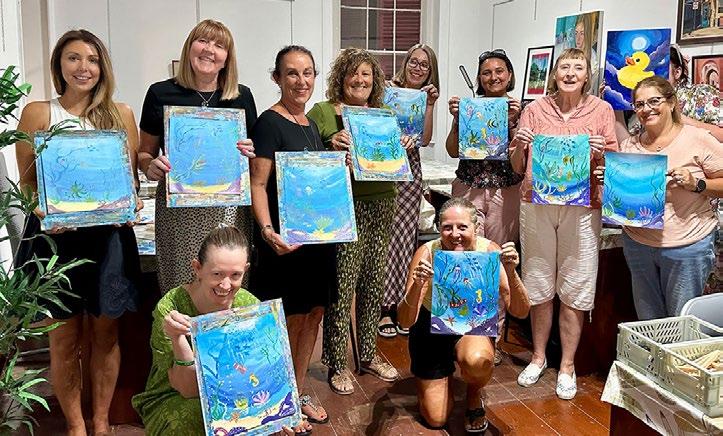
Children’s classes soon expanded into adult workshops. For Gerry, this shift was deeply personal. In her early thirties, after the loss of her father and other life challenges, she had battled depression and art became her lifeline.
“I know what it’s like to be at the very dark lows where you don’t want to be awake anymore,” she shares. “But I also know how art propelled me from there. It’s my mindfulness practice, what yoga is to some, painting is to me.”
“What began as a side hustle has really become my bread and butter,” she explains. “Design is more of a side thing now and teaching art is my main job.”
It started with small workshops, but soon Gerry was experimenting with different formats. Inspired by the global popularity of ‘sip and paint’ evenings, she launched her own, though she quickly found the label too gimmicky.
“I call them Art and Wine nights,” she says. “Every Wednesday we get together, and most people follow the theme I set for that week, but I also encourage people to bring their own projects, because there’s nothing better than having a professional by your side to guide you.”
From there, the ideas multiplied: Art and Food evenings, Parent and Child sessions, and technique-focused classes on Tuesday mornings.This year, Gerry achieved a longheld dream: opening her own dedicated space, the Gibraltar Artist Studio (GAS) in Horse Barracks Lane.
“I’d always wanted my own studio,” she says. “The time felt right. I started looking around, and then someone approached me and said, ‘I think I’ve got the perfect place for you.’ Suddenly, it was real.”
With the support of her landlord who knocked down walls especially for the studio, Gerry painted and refitted the space, gradually furnishing it with a mix of salvaged and new pieces. The result is a bright, welcoming studio in the heart of town - a place
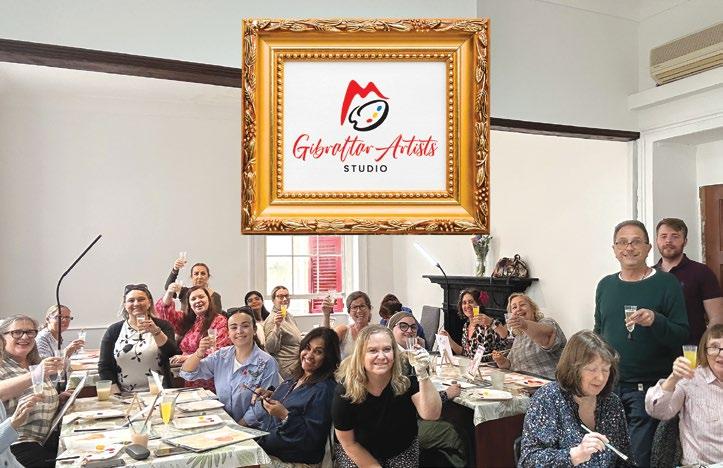

Gerry hopes will be remembered as a positive, uplifting hub.
“It had to be something prominent,” she reflects. “Somewhere people feel safe, where they can stop, take a breath, and just enjoy some ‘me-time’. Life throws so many hardships at us. I wanted to create a space that nurtures the soul.”
For Gerry, the classes aren’t just about producing paintings, they’re about mental health, community, and connection.
“Art is a natural antidepressant,” she says. “It promotes feel-good hormones, and it gives people a way to switch off from their worries for a couple of hours.”
Self-employment, Gerry admits, can be lonely, and art classes are as much about companionship as they are about brushstrokes.
“If you’re feeling lonely, come and join us,” she says. “It’s a community. You meet people, you share the experience. That in itself is healing.”
This autumn she launched an eight-week beginner’s course covering the elements and principles of art, designed for people who insist they “can’t even draw stick men.” For Gerry, breaking down those mental barriers is essential. “Everyone can learn,” she insists. “It’s about letting go and enjoying the process.”
The Gibraltar Artist Studio is already evolving into more than a classroom. Gerry envisions it as a hub for the whole community, with exhibitions, spotlights on local artists, and collaborative events.
“I don’t want it to be just about me,” she says. “I’ve started an Artist Spotlight series on social media, where we highlight a student’s journey each week. It’s about making the community visible.”
She continues to run “popup” sessions at other venues, but the studio is now the
beating heart of her practice. Locals have affectionately begun calling it “GAS”, short for Gibraltar Artist Studio. “I love it,” Gerry laughs. “People say, ‘I’m going to GAS’ and it’s become this positive, light thing. Exactly what I wanted.”
After a summer spent setting up the studio, building its website, and managing social media (a task made easier by her design background, though still exhausting), Gerry is now turning her attention back to her own art.
She is planning a solo exhibition in Gibraltar next spring. While she won’t yet confirm the venue, she promises it will be a well-known space. “I feel like I’ve planted all these seeds and now I’m ready to focus on my personal journey again,” she says.
True to her vision of community, Gerry also hopes to host exhibitions for other artists at the studio in future. “It’s about sharing the space,” she explains. “Encouraging people to show their work, to be proud of it.”
Gerry’s journey, from a talented child inspired by her musical mother, to a young student at Chelsea, to a designer, muralist, art tutor, and now studio founder, reflects the many ways art can shape a life.
Her murals brighten Gibraltar’s streets. Her classes bring strangers together over brushes and wine. Her studio offers a haven of creativity in the heart of town.
Most of all, her story shows how art can be both deeply personal and powerfully communal. “Everything I do is very personal to me,” she says. “But when people respond, they connect and that’s where the magic happens.”
For Gibraltar, that magic is now firmly anchored in the Gibraltar Artists Studio: a place where colour heals, brushes connect, and community thrives.

ROCK CLASSICS
TRITON
CUPRA TAVASCAN VZ1
MY FIRST VAN THE TRANNY
ISUZU D-MAX STEEL EDITION THIS MONTH

I have to admit that I am not really a ‘Bike Person’ more a car person, even as a youngster I couldn’t wait to get into a vehicle with four wheels. But there are millions around the world who love the two-wheel experience:
I too was wondering what a Triton was, as I’d never heard of one before, but it is the mixture of two well known motorcycle brands TRIumph and norTON, hence the hybrid name of TRITON.
The Triton was either built privately, or some dealers did offer completed bikes. They took the best two elements from each company and made what they thought was the ultimate riding machine.
Triumph provided the engines, and Norton the frame, put the two together and you got yourself a Triton.
Brian Scott bought his bike new in 1967, and looking at him, he must have been about eight when he got it.
Brian lived originally in Great Yarmouth where he spent many years as a Domestic Appliance Engineer repairing things such as fridges, washers, dryers etc. He had a Van for the business, but used his bike as an everyday vehicle when not in his van, and did many short journeys but also many long excursions too.
In 1967 the bike had a 500cc engine, but in 1973 he fitted a TRIumoh 750cc Bonneville T140V engine in it, and the same engine remains in the bike today.
Brian moved to Gibralter around 10-years ago, but after a short stay, he moved to Benelmadena for a number of years before moving back to Gibralter in Oct 2023, where he now permanently resides.
The Bike was originally registered in the UK with the number LVF16E, but has now been re-registered in Gibralter with G1119H. It has currently covered 21,000 miles, and Brian says it rides just like a new bike, and he has enjoyed every mile ridden on his pride and joy.
Hope he has many more years enjoying this true classic, the Triton.


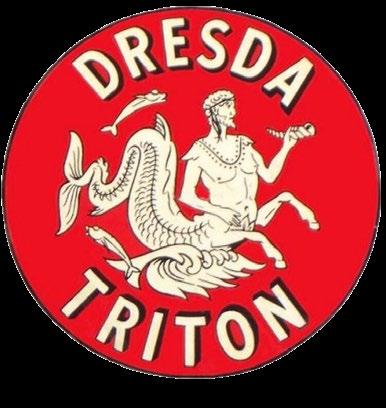


UP UNTIL FAIRLY RECENTLY THE NAME ‘CUPRA’ WAS A MODEL IN THE SEAT RANGE, BUT THEN THE GOOD PEOPLE AT SEAT AND VOLKSWAGEN GROUP DECIDED TO HAVE A BREAKAWAY BRAND, AND HAVE CUPRA AS A STAND-ALONE ‘MANUFACTURER’. AT THE TIME I REMEMBER HAVING MANY CONVERSATIONS WITH THE MANAGEMENT ABOUT THE CHANGES, AND I HAVE TO ADMIT, I WAS A BIT SCEPTICAL ABOUT IT. BUT WITH PLENTY OF ADVERTISING, ESPECIALLY ON UK TV, AND PUBLICITY IT SEEMS TO HAVE WORKED, AND CUPRA IS NOW AN ACCEPTED AND WELL LIKED CAR COMPANY
The latest model from CUPRA is the Tavascan a full electric SUV. When the Press Test Car was delivered to my house, the first thing that was obvious was just how big it was, and how much room there is in the cabin, and a huge boot.
It is powered by electric motors producing the equivalent of 340ps, and goes from 0-100kph in 5.5 seconds, so not exactly a slow thing.
While I had the car, it had a range of around 360km on a full charge, certainly not the best EV I’ve had, but by a long way not the worst either.
I have been to the SEAT Plant in Martorell, near Barcelona countless times over the years for various reasons, and is a very modern, very clean facility, with some really nice and friendly people, from shop-floor to senior management. I was curious to see exactly where in the vast assembly facility
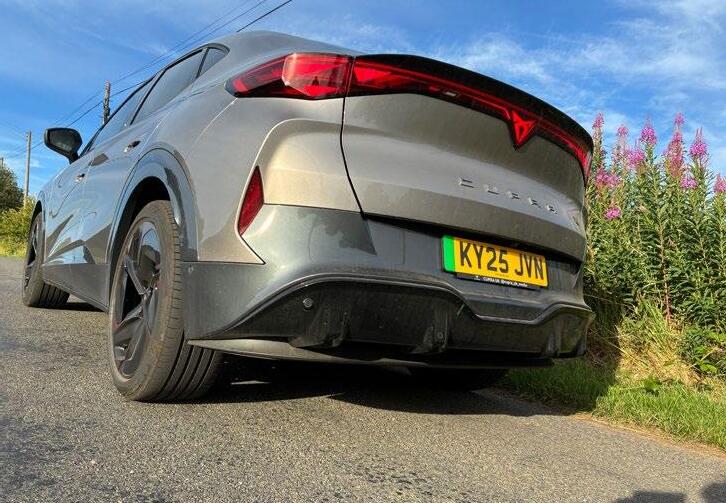
it was made. But found out it actually isn’t made in Spain , but in China at the Volkswagen Groups Anhui factory, alongside other VW Group Electric Vehicles.
The Tavascan gets its name (not from a heartburn and indigestion tablet, as a few people said while I had the car, and trying to be hilarious ) but from a Region in Northern Spain. SEAT, and now CUPRA have always named their cars after Spanish places, such as Ibiza, Malaga, Leon, Arona, Ateca, etc, but with some being a bit more obscure than others.
During the time I had the Tavascan it did everything right, was large and comfortable, and looks superb, the designers have certainly got this car right, and the people pressing the metal at the factory have achieved some fantastic body panels, very clever.


The cost of the test car a VZ1 in the UK is £57,280
August 1965 and the first of many millions rolled off the production line in the UK, a Van-Star was born.
Everyone, no matter who you are, where you live will have had uncountable contacts with this Van, and for hundreds and thousands, the Transit will have been their First Van.
Today many will be waiting for a Transit to pull up outside their home, and a parcel they ordered on-line will be delivered by a driver in their Transit.
But this Ford has had many uses, and Ford were very clever from almost day-one to offer buyers exactly what they wanted. Either built at the factory, or any sort of body, made and fitted by specialist independent builders.
The list of the tyre of Transit available is endless, a standard Van, but in varying lengths and heights. Tippers, Crewcabs, Fridges, Luton vans, minibuses, taxis, car-transporters, and used extensively by the Police, Ambulances and mini- fire engines. Conversions of a Transit Chassis Cab to Motor Homes is a popular choice for many.
The Transit has appeared in many Films and been on TV, the perfect ‘get-away’ Van for the rob-
bers, but usually in hot pursuit is a Transit Police Van, all made good viewing.
The Transit name became the goto name for vans, and no matter what make or type of Van, everyone says, oh, it was a Transit, regardless of it possibly being a VW, Renault, Citroen or Fiat.
Everybody has memories of a Transit, be it good, or bad, going off to the coast in a minibus with friends or family, or being rushed to hospital in an Ambulance, or being put in the back of one, before heading off ‘down to the Station’
The Transit has been the Backbone of Industry for Sixty-Years doing a splendid job for millions of businesses, and Ford continues to offer anything the customer wants, any colour, any body, any specification, choices of petrol, diesel or Electric. You say what you want, and Ford will make it for you.
Most drivers will remember with fondness driving a Transit, and all will say ‘My First Van’ was a Transit, and be able to recall the registration number, colour, body type and the years they drove it, it sorts of sticks in their memory.
Hope the ‘Tranny’ continues for another 60 years.
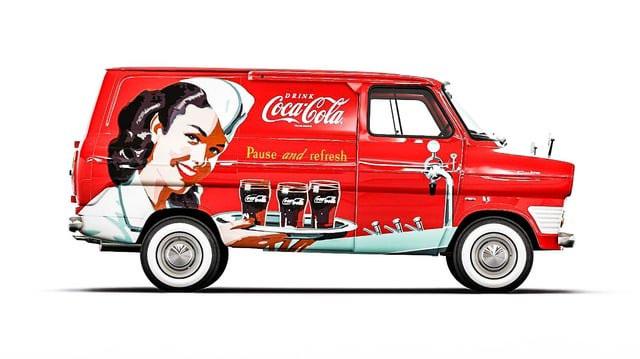








I have to confess I do like vans and pick-ups, I know sounds a bit strange, but give a commercial vehicle before a car any day.
Isuzu have recently updated the D-MAX range with some subtle changes to the exterior and interior, but you need a keen eye to spot them, and to be honest, nothing really wrong with the previous model, it was perfectly good, so I asked myself why mess about with something when you really don’t have to, but that’s progress I guess.
The D-MAX has had a few changes over the years, but essentially just looks basically the same, but every time Isuzu do make changes, the truck just gets better, in one way or another.
I have been driving different models over the years, and always enjoy them. For the past few years, ISUZU Press department have loaned us one every December to pull Santa’s Sleigh around our local villages over 5-nights, and it does a fantastic job pulling Santa at very low speeds.
I have also drive a few D-MAX on some very tough terrain, and difficult off-road courses organised by ISUZU UK, and no matter what it is asked to do, the

D-MAX manages it. Going up and down some very slippery and treacherous steep hills, it just hangs on to all surfaces. Some of the inclines we had to endure I was sure it wouldn’t make it, but it did, much to my relief.
The STEEL model I had on test, is as much ‘car-like’ as you can get, a very nice leather interior, comfortable and a joy to drive, maybe a bit big for some car park spaces, but I always managed to park it.
One complaint by some of this Isuzu is the engine, while other competitors such as Ford, VW and Toyota have larger engines, the D-MAX only has a 1.9-litre with a Turbo. that produces 161hp. I found it to be more than sufficient, and not as noisy as some others would say, it is a truck after all. Getting the balance right between a go- anywhere, do anything pick-up and getting as many car-like features is a tricky balance, but Isuzu have got it just about right with the D-MAX.
I was sorry to see it being collected.



GIBRALTAR MARKS ITS 100TH INTERNATIONAL GAME
A SOLD-OUT EUROPA POINT. A NEW SOUTH STAND FINALLY SINGING BEHIND THE NET. AND A CENTURY OF MEN’S INTERNATIONALS ON THE BOARD. ON 8 SEPTEMBER 2025, GIBRALTAR’S 100TH GAME DIDN’T DELIVER THE RESULT WE WANTED AGAINST THE FAROE ISLANDS, BUT IT DELIVERED SOMETHING BIGGER: THE FEELING OF BEING HOME, PROPERLY HOME, WITH OUR SUPPORTERS BACK WHERE THEY BELONG, BEHIND THE GOAL.
For more than three decades, an entire generation watched from the sides. September changed that. With 1,000+ new seats in the South Stand. One of the biggest official home crowds we’ve ever hosted filled Europa Point and made it sound like a cauldron again.
It was a night set up for reflection as much as celebration. Think back to where this journey started 99 games ago: 19 November 2013, a 0–0 draw with Slovakia at the Algarve, our home away from home. From that first step to a 100th capstone on home soil, 86 A-international players have pulled on the shirt, each of them part of the story we told together in red and white.
Scott Wiseman: “Our interaction with the public, with the fans, this week, and with everyone around the new stadium, has been fantastic. It really showed in the second half, we came out firing. The fans were behind us, they tried to drag that ball into the goal. It was amazing to be part of that.”
There were new faces woven into the occasion, too. Julian Del Rio led the line and started both games this camp. In the 99th match, a friendly against Albania, midfielders Jesse Gomez and Jeremy Perera came off the bench to collect their first senior minutes. And then, on the milestone night itself, winger Luca Scanlon stepped on to the pitch as Gibraltar’s youngest ever men’s international at just 16, greeted by a roar from the new South Stand.
The armband for the 100th belonged to Graeme Torrilla, fittingly in his birthday week. That’s what this night was about, experience and first-timers, helping lead
one of the youngest groups in our Men’s National Team history, all meeting in the sound of a new home end. You could see it in the flags and the drums, you could feel it in the way the team attacked toward that wall of colour late on, and you could hear it in the stubborn volume that refused to fade, even after the final whistle.
We’ll remember the scoreline, yes. But we’ll remember the sight more: Gibraltar, behind the goal again, and a century marked not by a number on a page, but by a full stadium on our own soil, again.





THE ROCK CUP CHAMPIONS ARE GETTING READY FOR THE NEW SEASON, AND WHILE THE NAME ON THE FRONT OF THE JERSEY HAS CHANGED, THE WINNING SPIRIT REMAINS. AFTER FULLY INTEGRATING WITH MONS CALPE SC UNDER THE REYGADAS SPORTS GROUP UMBRELLA, THE SOUL OF GIBRALTAR WAVE CONTINUES TO DRIVE A NEW, AMBITIOUS ERA FOR WOMEN'S FOOTBALL ON THE ROCK. THIS IS NOT A NEW BEGINNING, BUT A POWERFUL CONTINUATION OF A PROJECT BUILT ON PASSION AND SUCCESS. WITH A CORE OF CHAMPIONS RENEWED AND A WEALTH OF EXPERIENCE BROUGHT IN, THE TEAM IS SET TO DEFEND ITS TITLE AND TAKE THE NEXT STEP TOWARDS ITS ULTIMATE GOAL: THE UEFA WOMEN’S CHAMPIONS LEAGUE .
The recent merger under the Reygadas Sports Group is more than a simple name change; it’s a strategic move to infuse the team with enhanced resources, professionalism, and a global vision. The groundwork laid by Gibraltar Wave’s pioneering spirit—a spirit that led to a historic Rock Cup victory—will now be fortified by a new level of ambition and structure. This article is a testament to the club’s journey and a deep dive into the talented squad assembled to bring its dreams to life.
The backbone of last season's historic Rock Cup victory is here to stay, cementing the foundation of the team. Captain Karyn Barnett, who made a seamless return to football after a decade away, has re-signed after a debut season where she was instrumental in the midfield and earned two caps for Gibraltar. Her resilience and leadership on the pitch make her a natural choice to lead the club into this new chapter.
She is joined by fellow Rock Cup heroes Nicole Nash, a vital pillar of the team's project, and powerful strik-
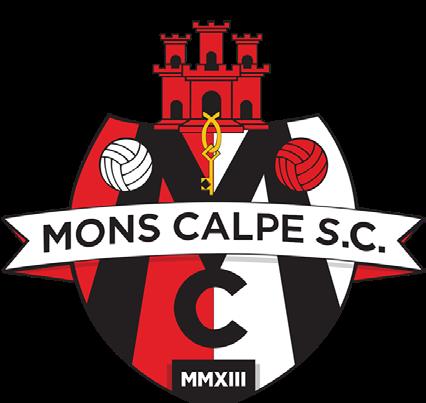

er Gianelle Hanglin, whose offensive firepower was key to the club's success. Both players’ commitments underscore their belief in the project's long-term vision. In goal, the club has secured the continuation of Caitlin Robba. In just two years of playing football, Caitlin has become the starting goalkeeper for both the club and the Gibraltar National Team, with her rapid rise serving as a powerful testament to the club's hard work.
The club has also secured the return of several veterans who were vital to their recent success, including winger Beverley Shing, who provides exceptional pace, and stalwart Sally Barton, a veteran leader from the very beginning. They are joined by Elah Cassano and Alexa Hink, both of whom have also re-signed to continue their journey with the club.
In an incredible comeback story, Zarajan Lopez has returned after a year out due to injury, making a courageous switch from goalkeeper to a role in midfield. Her resilience and unwavering experience will be an inspiration to the entire squad. The competitive environment is made even stronger by the signing of Alba Gonzalez, who will compete with Caitlin
for the number one spot, ensuring the team's defensive core is never complacent. Alba is also able to help out in defense as well as in midfield.
To build on their success, the team has strategically strengthened its squad with a mix of top-level experience, international talent, and promising youth.
The defense is bolstered by the addition of several key players. Veteran defender Josie Cummings, a stalwart for the Gibraltar National Team for 11 years, brings invaluable experience from clubs in both the English and Spanish leagues. She is joined by the versatile and aggressive Kyrelle Revagliatte, a 15-year national team veteran with a winning pedigree from her time at UD Algeciras and CD Estepona. The defensive line is further fortified by the signing of the strong and composed central defender África Melero and Karima Gracia, adding a new dimension of power and expertise.
The club’s commitment to building a formidable defense also extends to its promising young talent. The signings of 16-year-old defender Arianne Parody, who comes from the reigning league champions, and Lauren
Hernández, a talented defender from Hércules CF, signal a clear intent to nurture the future of Gibraltarian football.
The attack gets a major boost with the signing of American attacker Erica Petrie, who brings valuable NCAA Division I experience from Fairleigh Dickinson University. Her arrival marks a new step for the club in attracting top-tier international talent. As a versatile attacking central midfielder or striker, her technical ability and goal-scoring instinct will be a major asset to the offensive line. In midfield, the team welcomes Vanesa Morente, a top-quality addition who reunites with her former coach, and young attacking talent Saskia Phillips, who is known for her fearless play and powerful shot. The club has also brought in more exciting young prospects, including Beau Reyes, Phoebe Reyes, and Cathryn Rocca, all poised to make an impact.
The squad’s ambition is matched by its new leadership. Guiding this newlook team is Head Coach Dani Amaya, a UEFA Pro Licence holder with international experience across Bolivia, Morocco, Mexico, and Spain. His proven track record of developing more than a dozen Gibraltar National Team

players makes him the perfect leader to take the team to new heights.
He is joined by Second Coach María Hidalgo, an expert in women's football with an impressive background coaching in the United States and France. Her most notable achievement comes from over ten consecutive years managing Barbate C.F. Femenino, making her a true expert in the game.
Adding further elite expertise is Greg Birnie, who joins the club as a Physical Development Coach. With a Master's degree in Sports Science, Greg brings invaluable experience from his time as a Physical Development Coach with the Liverpool Football Club female academy squads. His specialized knowledge in strength and conditioning, rehabilitation, and youth sports development, combined with his local experience, ensures that the players will receive a holistic and professional training program.
With a champion core renewed, a new influx of top talent, and a visionary coaching team, Mons Calpe Women is poised to build on the legacy of Gibraltar Wave and write a new, ambitious chapter in the history of Gibraltar women's football. This is a team built not just for the next season, but for a lasting dynasty.

FC Bayern Munich looked to take on current Club World Cup champions Chelsea FC on Match Day 1 of the UEFA Champions League. It took FC Bayern Munich 20 minutes to break the deadlock via a Chalobah own goal. FC Bayern doubled their lead, as Kane converted from the penalty spot after being taken down within the six yard box.

Cole Palmer responded only two minutes later to half FC Bayerns lead. As it stood FC Bayern went into the break with the score in their favour of 2-1.
FC Bayern and Harry Kane started the second half the same way they did the first with confidence and hunger for more goals. A misplaced pass from Malo Gusto played a pivotal role in allowing Harry Kane to obtain his second goal of the game in the 63rd minute.
Cole Palmer thought he had closed the gap once again in the 89th minute only to have it overruled by VAR on an offside basis, therefore securing an all important 3 points on match day 1 in front of a packed Allianz Arena which saw 75,000 fans (full capacity) see the home team win 3-1 on the night.



The album crafted by Pieter Rietkerk whose credits include work with (Uriah Heap, Catfish and the Bottle Men, Lake Malice, and Wargasm) got its first outing at a private event hosted by the band on July 23rd at Rock on The Rock. It was a rather intimate evening where those invited like myself were able to listen to the album in its entirety and in between plays we all got to hear from the band and learn more about the process behind it all. It was very interesting to listen to how much work goes behind something of this magnitude. I am glad that they had the opportunity to thank those in attendance for their endless support over the years.
The quartet is composed by:
Tristan Howes (Bass and vocals)
Sam Cottam (Guitar)
Alex Vallejo (Guitar)
Chris Osbourne (Drums)
The band have also been rather busy in the last year as they have performed across Andalusia and this past month they will be performing three dates with metal giants The Five Hundred.
Onto the album...
Kicking off the album is End of Days. The track penned by the band’s own Sam Cottam is filled with amazing riffs and energy throughout. The lyrics once you read them will definitely ring true to the ears of many, especially when it comes to the chorus. Chris’ drumming throughout will leave you full of adrenaline and believe you me, it gets you going from beginning to end. A perfect start to the album.
Isolation is up next. It is absolutely flawless and perfectly laid out. Every note hits you right in the feels. The guitars definitely do their job here. The track was written by the band’s own Tristan Howes whilst on a work related trip to India. The music was composed by Alex Vallejo. It combats depression and if you pick up a physical copy of the album, read the lyrics. They really hit home and became immediately my favourite of the album due to its message. It is a certified banger, no doubt.
Disciple is third up. The intro to this one is picture perfect. As someone who in his teens would jump into moshpits and headbang along to the music, this one made me want to do just that! The track warrants it 100%.
Local metal band wecandividebyzero are represented by RK Music Talent and on the 5th of September they officially released their first self titled album. The album is composed of eight tracks and is 36 minutes and 3 seconds in length but believe you me, especially if you are a fan of the genre that your ears will be pleased so make sure you are ready to headbang along!
Fourth track in and this one was already a favourite from when they released it in June 2024. Artificial Soul has a very eclectic balance to it and more so when the vocals come in like a HUGE kick to a door! It has some really spectacular riffs and rhythm and a solo that if you are a fan of guitar solos will floor you, no joke. Listening to the lyrics will leave you able to identify what it’s all about.
Crossfire comes in fifth album and wow. There is true emotion in this one, a lot of talk in it about despair but it is truly a killer track and one that proves that amongst the band they all have eclectic music tastes. The tempo and heart are all in the right place for this one and truly could be considered one of their most underrated tracks.
We are just coming now to the last three tracks of the album. Narcissus is one in my eyes and ears that would not look out of place on a metal chart or album by any other band of the genre. It is quite an exhilarating track and with a message that will speak to many.
Avarice the seventh track of the album is very tight and epitomises what the band are all about. Alex’s versatility and prowess as a guitarist is sublime here. There is a lyric here that says “Memories burning at the hand of greed and sorrow.” - The band’s sound throughout on this one shows you how far they have come as a quartet. I can safely say that they have never sounded better.
Saving the best of last and the last track is Party Treats. Party Treats is one of their older songs so it was nice to see it featured for their first album. It sounds great and even eight years after its release it was good to hear it again! One for any metal fanatic and one to lift your horns up and headbang to!
It goes without saying that the genre is not everyone’s cup of tea but after all these years I think it’s time we bow and salute the band for not just keeping the genre alive on the Rock but for never giving up on their ambitions and hopes. I can safely say as a Music Journalist that I am extremely proud of them but as a friend I am even prouder. I would like to thank them for their years of friendship and for entrusting me to write a review of what is a great album. So much so that I advise you all to not sleep on and check out. *****
You can follow the band on Spotify and also on their social media pages at the following links:
facebook.com/wecandividebyzero instagram.com/wecandividebyzero



BY GIANA SPITERI

In Gibraltar, Christmas is usually accompanied by sunshine or the occasional burst of rain. However there are many people who when they picture the perfect Christmas, they picture snow, cozy markets and the smell of mulled wine. Whilst holiday cheer can be found locally, here are seven cities that offer a winter wonderland escape.
Tallin, Estonia
Tallin is perfect if you’re looking for Old Town charm that looks like it’s come straight from a fairytale book. In the Town Hall Square you’ll find one of Europe’s most charming Christmas markets, filled with wooden stalls selling handicrafts, gingerbread and spiced glogi, Estonia’s version of mulled wine. When snow falls, it covers the ancient walls making it look like a Christmas postcard.
Direct flights are available from Malaga airport with Air Baltic, 4 times a week.
Lapland, Finland
Lapland is the pinnacle location for Christmas in the snow. Located in the far north of Finland, this region is synonymous with Santa Claus, Reindeers and winter activities. In Rovaniemi (Lapland’s capital), you can cross the Arctic Circle, meet Santa in his workshop, and send letters with a special North Pole postmark. Perfect if you’ve got children in the family!
Snow is practically guaranteed here in December, meaning that you’ll also have the opportunity to try adventures such as dog-sledding, snowmobiling and reindeer sleigh rides. If you’re lucky, you might also catch the Northern Lights in the evening.
There are currently no direct flights available, but you can fly through Helsinki.
Reykjavik, Iceland
Iceland’s capital offers a unique Christmas experience. The city combines its quirky traditions such as the ‘Yule Lads’ with its stunning natural beauty. Reykjavik’s Christmas markets are filled with handmade gifts and Icelandic treats like smoked lamb and leaf bread.
There are also plenty of winter adventures to take part in, from soaking in geothermal hot springs surrounded by snow to taking a trip to see frozen waterfalls and volcanic landscapes. This is also a great location to try and spot the Northern Lights.
Direct flights are available twice a week on Wednesday and Saturday from Malaga Airport with Icelandair.
Krakow, Poland
The Main Market Square in Krakow is one of the largest in Europe, and brings the Christmas magic with its towing Christmas tree and festive market stalls. You’ll also find a lot of nativities on display, inspired by the city’s architecture. They are displayed in the square and people compete in an annual contest. Krakow is also the cheapest destination on this list, making it a perfect choice if you’re on a budget or taking the whole family! Also, make sure to try some traditional Polish food like pierogi (dumplings) and oscypek (smoked cheese).
Direct flights are available everyday from Malaga Airport with Ryanair and WizzAir.
This list would not be complete without including Nuremberg, home to one of the most famous Christmas markets in the world. If you’re looking for an iconic German Christmas atmosphere, filled with mulled wine and bratwurst sausages, then this is the place for you. If you have kids, they also host a special children’s market complete with a carousel, steam train and toy stalls.
Make sure to try some traditional Christmas foods such as Nurnberger Lebkuchen, famous gingerbread glazed in chocolate. Or Drei im Weggla, 3 small Nuremberg sausages served in a crusty bread roll.
Direct flights are available several days a week from Malaga Airport with Ryanair.
If you fancy a trip further abroad to really get that Hallmark movie Christmas feel, then New York is the place to go. Snow may not be guaranteed, but when it does Central Park transforms into a winter playground with sledding, snowball fights and ice skating at Wollman Rink. However the most iconic place for ice skating is at the Rockefeller Center, where you’ll also find the world famous Christmas tree.
Fifth avenue also dazzles with elaborate window displays, whereas Bryant Park’s Winter Village combines shopping, food stalls and skating in one place. It is also an experience to see how locals decorate the outside of their homes, it is very different to what we see locally in Gibraltar and Spain!
Direct flights are available everyday from Malaga Airport with multiple airlines.
If you fancy the ease of travelling from Gibraltar Airport, then London is the destination for you. Whether you want to do some Christmas shopping in Oxford Street, look at the elaborate decorations in Carnaby Street or see a pantomime show like The Nutcracker. It’s the perfect choice for a weekend winter getaway.
You will find Christmas markets dotted around the city, but the main attraction is Hyde Park’s Winter Wonderland. Here you’ll find an ice rink, circus shows, rides, markets to buy trinkets as well as tonnes of food stalls. Standard entry is around £5, but be prepared to spend more on food and drinks as prices here are quite elevated!
Direct flights are available everyday from Gibraltar Airport with Easyjet and British Airways.
If you think cruising is all shuffleboard and buffets, think again. MSC World Europa is rewriting the rules of ocean travel with a ship that feels more like a futuristic city than a floating resort.
Launched as MSC Cruises’ flagship, this LNG-powered vessel is one of the most sustainable ships at sea. But it’s not just green—it’s grand. With 22 decks, over 2,600 cabins, and space for more than 6,000 guests, MSC World Europa is a marvel of modern engineering and design.

The ship’s standout feature is its openair promenade, a sweeping architectural statement that curves through the aft like a canyon of glass and steel. It’s home to bars, restaurants, and the record-breaking Venom Drop slide—a stainless-steel spiral that plunges 11 decks. Yes, you read that right.
Inside, the vibe is sleek and contemporary. Gone are the gaudy interiors of oldschool cruise ships. Instead, you’ll find warm woods, soft lighting, and design elements that echo the flow of the sea.

The MSC Yacht Club, a private-access “ship within a ship,” offers luxury seekers a quieter, more refined experience with butler service, exclusive lounges, and priority everything.
Dining is a global affair. From Mediterranean classics to Asian fusion, the ship’s 30+ venues cater to every palate. High-

lights include Chef’s Garden Kitchen, where microgreens are grown onboard, and the Masters of the Sea pub, which brews its own craft beer at sea.
Entertainment is equally diverse. Broadway-style shows, immersive virtual reality experiences, and even drone shows light up the evenings. For families, there’s a sprawling kids’ zone, water park, and themed activities that keep young cruisers engaged from port to port.
Speaking of ports, MSC World Europa sails itineraries that explore the best of the Mediterranean, Middle East, and beyond. Whether you’re wandering the souks of Dubai or sipping espresso in Naples, shore excursions are curated to offer depth and discovery.

But perhaps the most impressive part of the journey is how seamlessly it all flows. Wristband tech replaces key cards, elevators are smart, and the app keeps everything—from dinner reservations to spa bookings—at your fingertips.
MSC World Europa isn’t just a cruise ship. It’s a glimpse into the future of travel—where sustainability meets sophistication, and every moment feels like a new horizon.

Istanbul, the largest city in Turkey, is the country's economic and cultural capital. With a population over 16 million, it is one of largest cities in the world by population and the second largest in Europe after Moscow.
We stayed in the Sultanahmet district, which is an excellent location as it is the historic heart of Istanbul and offers easy walking access to the major sites.
On the first morning, we started out at the Blue Mosque. Don’t forget that women should have their heads, shoulders, and knees covered, and men should ensure their knees and shoulders are covered. Another good tip, as with many of the popular attractions, is to get there early to beat the queues. Most of them open at 8 am and it is also worth checking out some of the online ‘skip-the-line’ offers.
The elegant domes and cascading minarets of the Blue Mosque rise above the city, and inside, the intricate blue Iznik tiles give

the space its famous glow. Opposite, the Sophia Hagia Experience Museum provides a modern contrast: immersive exhibits with light, sound, and projections that bring the building’s layered history to life. From there it is a short walk to the Hagia Sophia Mosque, once a Byzantine basilica, later an Ottoman mosque, then a museum, and now a functioning mosque again.
After a morning steeped in architectural grandeur, a two-hour boat trip down the Bosphorus offers another perspective. Gliding between Europe and Asia, you pass grand Ottoman palaces, waterfront mansions, and the modern suspension bridges linking two continents.
At all times, we felt safe and relaxed, but we did stick to the main tourist areas. One thing we noticed was the plethora of cats. They were everywhere and we found out
that they are well-fed, protected strays with legal and cultural frameworks that grant them the right to live freely in the city.
On the second day, we delved deeper into the city’s past at the Basilica Cistern, a magical underground water reservoir supported by hundreds of columns. The cistern is lit with changing colours, highlighting the reflections of the columns in the water and creating an otherworldly atmosphere.
Not far away lies Topkapi Palace, once the seat of Ottoman sultans. If you have the stamina, a trip around the massive Palace can take anything from 2-4 hours. We wandered through the courtyards, kitchens, and the Harem, and marvelled at the jewelled relics in the Treasury.
Istanbul… we will be back


YOUR GUIDE TO PACKING FOR A WEEKEND AWAY
10 TIPS FOR REACHING YOUR GOALS FEMALE FRIENDSHIPS BODY NEUTRALITY

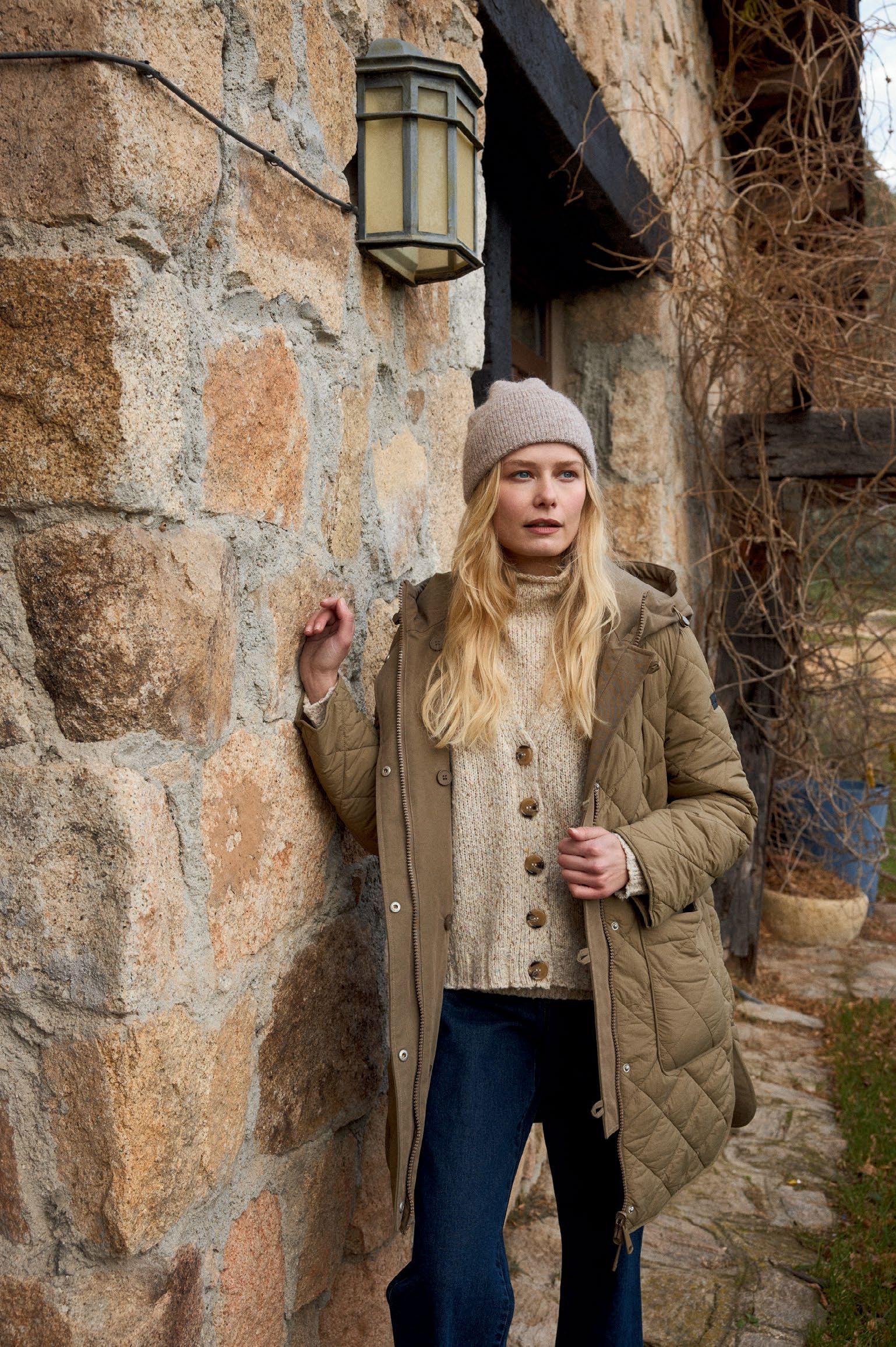
This autumn is all about fluid fabrics, delicate de tails, and versatile silhouettes. Blouses with refined finishes and dresses designed to suit every occasion.
VAN-DOS: timeless autumn elegance.



Weekends are for escaping the weekday routine, exploring new places, and, hopefully, some relaxing. But somehow, packing for just a couple of days can turn into a full-blown ordeal. Before you know it, your suitcase is bursting, and half of it never gets worn. The good news? You don’t need a closet on wheels to enjoy a stylish, comfortable weekend away. With a few smart choices, you can pack light, look great, and actually enjoy the trip without lugging around excess baggage.
Thankfully, style doesn't have to be sacrificed when packing light. Building a fashionable, adaptable casual outfit that fits all of your weekend activities without packing too much in your suitcase is an important skill. Consider it a miniature capsule wardrobe: a well-curated assortment of items that layer nicely, mix and match smoothly, and carry you from coffee in the morning to strolls in the evening without any problems.
You can put together multiple looks with a small number of pieces if you concentrate on multipurpose pieces, colour combinations, and a few bold accessories. What once seemed like a burdensome activity becomes a stress-free, even joyful, aspect of your weekend preparation when you incorporate a straightforward packing method.
Here are six simple steps you can take to ensure you don’t overpack:
1. Start with a base palette.
It’s important to start with a base palette when you’re packing for a weekend away because it creates a cohesive wardrobe where every piece works together. To do this, choose two or three neutral colours, such as black, navy, beige, white, or grey.
Then add one accent colour, like olive, mustard, or denim blue. By sticking to versatile neutrals and adding just one or two accent colours, you can mix and match outfits without overthinking or overpacking.
2. Pick three or four tops.
What is usually advisable is one casual top (for lounging, sightseeing, etc), one dressier blouse or button-down (for dinners or more formal events), and one lightweight sweater or cardigan (for layering). If you want to be really prepared and still pack light, in case it’s extra hot or a little bit colder than you anticipated, pack one tank top that you can wear either as a casual top or under garment.
3. Two or three bottoms.
One pair of jeans (neutral wash) and one pair of casual trousers or shorts (depending on the weather) is a good start. Depending on your planned activities, you might want to take one skirt or athleisure leggings for more flexibility.
4. One outerwear.
Choose a versatile jacket like denim, utility, or a light puffer. Something that matches your palette. And if you’re travelling somewhere cooler, you can wear it in transit to save suitcase space!
5. Maximum of two shoes.
Some people consider this one the hardest, but if you pack one pair of comfy sneakers or loafers for walking and one pair of versatile flats, sandals, or ankle boots for evenings or dresser moments, you will save a lot of suitcase space - especially as you will be wearing one of these during transit!
6. Accessories (but keep it minimal)
It is recommended to pack one cross-body bag or a stylish satchel, as they are handsfree and practical. Also, it might be a good idea to include one scarf or pashmina, as it adds polish and doubles as warmth. Additionally, consider simple jewellery like studs or hoop earrings and a bracelet or a watch. Because you risk losing something or wasting space if you put everything into the suitcase separately, another packing tip is to put the jewellery and the scarf or pashmina into the bag and then either pack the bag into the suitcase or use it as a carry-on.
The secret weapon is layering and packing multipurpose pieces. For instance, long button-down shirts may be used as a top, a cover-up and a layering piece; a scarf can be used as a blanket in a car or on an aeroplane; and trainers that are appropriate for both casual dinners and sightseeing are all items that can do double duty.
However, there are some packing strategies you can utilise that can help you further. One of the best tricks to follow is the “3-2-1 rule”, where you pack three tops, two bottoms, and one versatile dress or jumpsuit. This formula gives you at least six outfit combinations without the bulk of a full wardrobe. The key is that each piece can be dressed up or down and layered depending on the weather or activity. Another game-changer is sticking to a carry-on bag rather than a full suitcase. The smaller space forces you to be intentional with your choices and prevents the “just in case” overpacking traps.
Last but not least, try rolling your garments rather than folding them when packing them in your bag. This will assist in minimising creases and conserving space. If you prefer to keep clothes in groups, packing cubes can also be helpful. For instance, you might put daywear in one cube and evening wear in another.
This smart guide approach turns packing from a stressful guessing game into a simple, repeatable system. You will know exactly how much to take, have options for different settings, and you won’t waste valuable trip time rummaging through a bag of “what was I thinking?” extras. Remember, you don’t need to overthink, and you definitely don’t need an overflowing suitcase to feel stylish. So, pack less, style more, and your weekend self will thank you.
If you still need help, you can use our casual weekend wardrobe checklist to keep track of what you have already put in your suitcase and give you an idea of what to take.

• Base palette chosen
• Three or four tops
• Two or three bottoms
• Underwear
• One outerwear
• Two shoes
• Accessories
• Bag
• Jewelry
• Scarf/ pashmina
• Toiletries










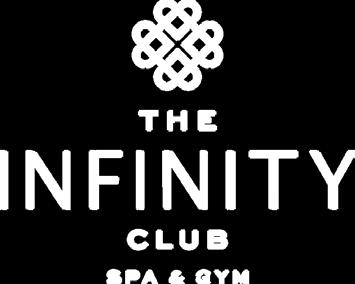




WITH SUMMER BEHIND US, A LOT OF US TEND TO GO INTO SOCIAL HIBERNATION AND ENJOY MORE COMFORT FOODS AND A SLOWER WAY OF LIVING. THAT SOMETIMES ALSO MEANS THAT WE BECOME A LOT MORE SEDENTARY AND FIND IT HARDER TO STICK TO OUR GOALS. HERE ARE 10 TIPS FOR REACHING YOUR DIET AND FITNESS GOALS.
The first step to making sure you’re committed to hitting your goals, is figuring out why you’re doing it in the first place. Do you want to have more energy? Do you want to feel less stressed? Do you want to feel more confident in your clothes? This will be personal to you, and every time you feel unmotivated to work out or cook something healthy, remember why you’re doing it.
If you’re someone who is new to the gym, then telling yourself that you’re going to go 6 times a week is just going to set you up to fail. The same way if you only give yourself 2 weeks to lose 5kg. You’ll be miserable and the results won’t last. Instead, start off with something you know you can stick to and then you can make adjustments.
If for example you’re looking to lose 5kg by Christmas, do the maths on how much you’d have to be losing weekly to hit that target.
This is probably the best way to stay consistent with your eating habits and ensures that you’re not just choosing a takeaway because you don’t know what to have for dinner. Use a weekly planner or the MyFitnessPal app to track what you’re eating and make sure you’re staying within your calories and hitting your macro-nutrient goals. One tip is to put in what you’re having for dinner first, and that way you’ll know how many calories you have left to play with for the rest of the day.
Depending on what your goals are, you’ll want to track your results to see if what you’re doing is working for you or if you need to adjust your diet or workouts. The easiest way is using the scale and I recommend buying one that also gives you your body fat % (most gyms usually have a free machine you can use). It’s recommended to weigh yourself everyday and then look at the average of the week, as many things can cause fluctuations that don't mean weight gain/loss.
Another method is taking progress pictures, taken in the morning and wearing the same thing so you can accurately compare.
Not everyone enjoys lifting weights at the gym or using a cross trainer. So it’s important you find something that you can stick to without dreading it every time you need to exercise. One commonly underrated exercise is walking. You’ll be surprised how much of a difference it can make if you try and hit between 8-12k steps every day. Just think about the time you went on holiday and came back feeling the same because of all the walking you did!
Unless you’re training for a marathon or a body building competition, a slip here and there isn’t going to derail all your progress. There will be birthdays, celebrations, after work drinks and other things that you might not want to miss out on. Just try and make healthier choices when you can. If you know you’re going to be having a big dinner out, try and have a lighter high protein lunch. If you’re going for drinks with your friends, stick to something lighter like prosecco or a vodka soda, instead of cocktails.
One of the best ways to see results is to make sure you’re reaching your protein
goals. An estimate is to have 0.8g-1g of protein for every lb of body weight. By doing this, not only will you maintain and grow your muscle mass, but you will also feel satiated for longer and have less cravings. When it comes to fibre, most of us aren’t getting the necessary intake we need to support a healthy digestion. For women 25g is recommended and for men it’s 38g per day. Foods that are high in fibre include broccoli, spinach, sweet potato, raspberries, oats, lentils and chickpeas.
It’s proven that we are more likely to stick to something if someone does it with us (or at least holds us accountable). Try and find a friend or family member who is interested in doing a weekly class with you, or maybe encourage your partner to also cook healthy meals with you.
Controlling your glucose levels is something that benefits everyone, not just those with diabetes. It will help with energy levels, reduce brain fog, protect against type 2 diabetes and help with weight management. I recommend reading the book Glucose Revolution for a deeper dive into all the benefits of controlling your glucose.
Some simple ways to do this are by having a savoury breakfast, having a veggie starter and walking for 10 minutes after you’ve had a meal.
You don’t have to wait until you’ve hit your final goal to celebrate, instead reward yourself for your achievements or ‘small wins’. If you’ve worked out 3 times a week for the whole month, why not treat yourself to a new gym set? If you’ve cooked healthy meals all week, maybe order a takeaway to enjoy with your family on Saturday night.
Remember, sticking to your diet and fitness goals is more about building a sustainable lifestyle rather than a short term ‘quick fix’ plan. Good luck!
Local Zumba instructor Miriam Drury this Summer travelled to Florida to be a part of Zincon. Zincon is undoubtedly the world's biggest Zumba convention and it was there that she was able to be with self minded instxructors as well as learn more from the pioneers in the Zumba world.
I was able to sit down with her and learn more about her journey as a Zumba instructor and more.
DJD: Tell us a little about you. How did you get involved with Zumba?
MD: My name is Mimi, I’m a 32-year-old woman from Gibraltar, and I’ve always had a huge passion for music and dance. My journey into Zumba was born out of pain. From the ages of 4 to 15, I was sexually, physically, and mentally abused. It was because I was carrying all that trauma into my teenage years that at the age of 17 I found myself in the middle of taking my predator to court. To protect me from sinking further into that darkness, my family sent me to Miami for three months to live with my Aunt.
That trip changed my life forever. In Miami I started training outdoors with a personal trainer, and I joined the local community center where I discovered Zumba. From the very first class, I felt freedom again. I felt alive. Every beat of the music, every move, lifted the weight I had been carrying. Zumba became my safe place, my therapy, and in many ways—it saved me.
When I returned to Gibraltar, life got busy and Zumba became something I dipped in and out of. But after I gave birth to my beautiful son, I gained over thirty kilos. My health was struggling,

my confidence was gone, and I knew I needed to make a change. I trained hard, studied fitness and nutrition, and transformed my lifestyle. That transformation made me realise I didn’t just want to help myself—I wanted to help others.
At 30, I became a Zumba instructor. Now, two years later, I am living one of my biggest dreams: teaching and inspiring a community that feels like family, welcoming people of all ages into my classes. After everything I’ve been through, my purpose is clear: to help others heal, to give them energy, joy, and confidence, and to push them to become the best versions of themselves.
I am a happy, lively, and passionate person who gives her all in everything I do. I love lifting people up, bringing positivity, and giving my energy to others—always putting people before myself. That’s what makes Zumba more than a job for me. It’s my mission.
DJD: Who was your first Zumba instructor and how influential have they been in your journey?
MD: My very first classes were in Miami when I was 17, and those sessions will always hold a special place in my heart because they gave me hope when I needed it most. But in terms of influence on my career as an instructor, three women have been especially important: María Escámez, Marta Formoso, and Virginia Escámez.
María has been one of my biggest inspirations, and I’m beyond excited that she will be coming to Gibraltar this month —it feels like a dream to welcome her here. Marta guided me through my Pro Skills training, and Virginia has been another huge source of learning and inspiration. These women showed me what it truly means to teach Zumba—not just to lead moves, but to lead with love, strength, and authenticity. Thanks to them, my journey has completely transformed.
DJD: What are the health benefits of Zumba compared to other workouts?
MD: Zumba is so much more than exercise. Of course, it burns calories, improves fitness, tones the body, and strengthens the heart—but its true magic is what it does for the soul. Unlike traditional workouts, Zumba combines movement, music, and joy. It releases stress, boosts your confidence, and creates an incredible sense of belonging.
For me personally, Zumba was the tool that pulled me out of a dark place. That’s why I believe so strongly in its power. It doesn’t matter your age, size, or ability—Zumba welcomes you exactly as you are, and transforms you from the inside out.
DJD: You do a lot of collaborations with Zumba instructors across the world. How important is this for you and for keeping updated with the latest routines?
MD: Collaboration is essential—it’s the heart of growth. Every instructor brings their own culture, rhythms, and style, and when we come together we inspire each other and create magic. By working with instructors across the world, I stay fresh, creative, and connected to the latest routines and techniques.
But for me it’s more than just routines. It’s about building friendships, supporting one another, and creating a global community of positivity and love. Every collaboration is an opportunity to share energy, inspire students, and remind ourselves that Zumba truly connects the world.
DJD: You recently travelled to Florida for a convention where the “who’s who” of Zumba attended. Tell us about that experience.
MD: Travelling to Orlando for ZinCon was one of the most powerful and emotional experiences of my life. Imagine thousands of instructors, all from different countries, united by music and movement—it’s breathtaking. I attended incredible sessions like Make It Pop, met some of the most inspiring instructors in the industry, and felt the energy of a global family.
I came home overflowing with inspiration, fresh choreos, new skills, and above all—gratitude. ZinCon reminded me of the strength of the Zumba community and gave me even more drive to bring that same energy back to Gibraltar.
DJD: Lastly, how does one join your classes? When are they, where and what time? Both for adults and kids.
MD: I teach both adults and kids here in Gibraltar, with classes that range from Zumba Fitness, Zumba Toning, Strong Nation, Circl Mobility, GluteoBoom, and Zumba Kids. My community includes everyone from 4 years old all the way to 70+, and no experience is ever required!
OUR OWN LOCAL BLUES-ROCK SINGER-SONGWRITER SURIANNE SPEAKS TO INSIGHT ABOUT HOW IMPORTANT IT IS TO HER WELLBEING TO MAINTAIN A HEALTHY AND BALANCED LIFESTYLE.
She follows a routine to nurture both body and mind through daily choices.
Her mornings begin with a glass of honey, fresh lemon, and ginger in hot water before she laces up her trainers for regular run along the beach. On occasion taking on an early morning Mediterranean Steps challenge.
Surianne’s diet reflects her commitment to health. Avoiding processed and fried foods, instead enjoying plenty of fresh fish provided by her drummer band mate Albert, who is an award-winning fisherman.
Surianne explains that fitness is an important part of her music lifestyle. She heads to the gym on a regular basis, where she challenges herself with weight training routines. You might even spot her walking backwards along the beach, a practice proven to improve balance and body awareness!
She certainly had a heart pounding run during a recent recording trip to Madrid. She set out for a brisk walk through the fields, only to come into direct eye contact with a very angry bull! What began as a peaceful stroll quickly turned into an award winning sprint for safety.
After many hours of rehearsals in the studio she explains that it’s good to take time to unwind and relax and enjoy an occasional glass of wine, cheese, olives, and plenty of good conversation with band mates, Albert and Louis. She believes that true wellbeing comes not only from healthy habits but also from joy and con nection with the people around you. As she puts it: “A good diet and exercise is great to keep healthy, but being happy and laughing a lot is the key to a long and suc cessful life - plus my love of music of course.”


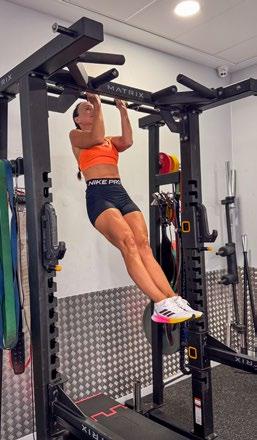
It is often stated that we cannot choose our families but we can certainly choose our friends. For women, female friendship is importantactually essential - at all stages in life.

Friendships are like plants; you need to water them to keep them alive and thriving. Several studies support the idea that when life becomes unbalanced with work and family demands, the first thing women do is push away our friendships due to lack of time or energy. We lose sight of the strength we provide each other and the healing benefits we derive from our friends.
We need to build and maintain these important bonds to protect our physical and emotional health. Maybe it is time to rethink friendships when time and life get busy. If friendships can enrich our lives in such a significant way, why are there so many of us who find it challenging to nourish them when busy? It is important to consider this.
We often hear that relationships are important but what if they were essential for your mental and physical health? Research suggests that women, in particular, benefit profoundly from social bonds, especially when dealing with stress.
It also suggests that friendship is not just a source of joy. It is also a biological necessity for women’s health and ignoring it could have serious consequences.
Let us start with a rather obvious one: we women are graced with better emotional abilities than the opposite sex. We are better able to recognise different emotions. We are also better able to express these emotions and live with them.
The extremely important factor here is our ability to express: our ability to talk about our feelings. You all know that feeling. The feeling when you are upset and you just need to talk to someone about it.
At that point you call your girlfriends, gather together with them, perhaps meet for s coffee or a glass of wine and discuss how you feel. Discuss your deepest fears, your biggest worries and dearest dreams. They listen and support you.
There is nothing that reduces stress levels like being able to talk, and being listened to. It is an invaluable process.
Women tend to be extremely loyal. Perhaps not every single one but a great majority of us. We put a lot of trust in people we love and value most and we expect the same loyalty to be reciprocated.
Loyal relationships make us feel stable, which also helps with our self-esteem. It is easier to pay a compliment to another woman when you feel it takes nothing away from you, and when you can count on their honesty and ability to pay one back when the time is right.
A girlfriend’s positive comment on our outlook or actions boosts our confidence somehow more than a man’s compliment. It is funny, but true.
The trust we place in our partner is invaluable. However, for a lot of us, trust between our partner versus trust between us and our closest girlfriends is not comparable.
Your partner will tell you you look gorgeous in a particular dress because they know that is what you want to hear Whereas you can be assured that your girlfriends will tell you honestly if a dress does not quite work for you and will happily discuss other, flattering options. Sadly, if a relationship breaks down, you can always rely on the fact that you are not not alone and you have constant emotional support.
Your friends are there for you, they will hold you up and they will support you. No matter what size the mountain you have to climb, with a safety net like your girlfriends you will be just fine.
On a similar subject, when you have created a strong support group,there is no situation, no fight, no issues big enough that cannot be handled. You have got the ultimate support system to which you can turn about any matter.
Whether it is positive or negative situation, your female friends will want to hear about it and celebrate/lament it with you. Whatever scenario you find yourself in, you can count on them to not judge you or laugh at you. There is no element of fear in female friendships.
It is often quoted that if women ruled the world, it would be a lot kinder, significantly calmer and a more civilised place to live in. Women see value in other things than power and money.
Those are unsustainable values, that have extremely destructive consequences when misused. We see it everywhere in the world today:
At the end of the day all of us humans are exactly the same. We all look for happiness, we all need food to stay alive, and we all need a community where we feel safe and accepted.
It all comes down to empathy. Women are intuitive, which means we are excellent at able to read emotions. This means females are also able to see things from others’ point of view, we are great communicators and listeners.

For women, friendships improve our overall sense of well-being and protect us from the hardships of life. Physical connectivity with other women alters our stress hormone levels and curbs negative behaviours.
The quality of our relationships matters hugely. Having a network of meaningful friendships with social support can make a significant difference health-wise. Having true friends helps relieve harmful levels of stress, which can adversely affect areas of health including gut function and the immune system.
Female friendships for many women are not only important but pivotal in their lives. The understanding, support and stability they bring is unquestionable - not to mention the laughs, fun and unforgettable memories.
Body Neutrality: How to love life without loving every curve.

You’ve been showing up to the gym, getting stronger, maybe even surprising yourself with what your body can do. But then you go to take that after-gym mirror selfie, and instead of celebrating your progress, your confidence randomly drops. You don’t look like the other people in the gym or the influencers on your feed, and suddenly you feel guilty, not just for comparing yourself, but for not loving what you see despite all the effort you’re putting in. And while it can motivate you to work harder, you don’t feel like you’re reaping the rewards like you should be. Does this sound familiar?
Nowadays, there is no shortage of books, podcasts, or social media posts explaining why you should love your body or attempting to explain why you subconsciously dislike it. It’s like there’s this cultural pressure to either love or hate your body everywhere you go, and it makes body positivity feel like another unreachable standard. There is, however, a middle ground that people often overlook, either because there’s a lack of understanding or they simply weren’t informed of such a thing, and that is Body Neutrality.
What is body neutrality?
The idea of body neutrality is to encourage acceptance and respect for your body without requiring you to either embrace or hate it constantly. It does this by shifting your attention from how your body looks to how it functions. It highlights that your value is independent of your appearance and that your body is a means for experiences, enabling you to fully live life, whether or not you like the way it looks. To put it simply, body neutrality detaches self-worth from appearances.
Neutral doesn’t mean negative.
Body neutrality does not mean ignoring or being negative about what you see. A lot of people see it as two sides of the same coin - you either like it or you don't; you’re either being positive or negative about it. Neutrality doesn’t mean you refuse to take care of it; it’s about shifting the focus away from appearance-based evaluation. You still nourish, rest, and move your body, but you don’t make appearance the main storyline. As for negativity, the middle ground is simply saying, “I don’t have to love every part of my body, but I don’t have to hate it either.” It’s like slipping on a bikini even though you don’t love how your body looks - you kind of just do it anyway, and you still enjoy the beach.
Why neutrality isn’t just positivity in disguise.
Body positivity encourages you to actively love and celebrate your body, regardless of size, shape, or ability. It focuses on finding beauty in all forms and challenges harmful beauty standards. Body neutrality, unlike body positivity, doesn’t demand constant self-love. Instead, it emphasises respecting what your body can do rather than how it looks. With the constant rise of social media, it’s normal to compare appearances, but is someone's appearance all they’re worth? Selfworth comes from who you are, not how happy or attractive you appear, and as Vex King, the author of “Good vibes, Good Life”, states, “Perfection is subjective and based entirely on perception”. So, you get to decide what perfection means to you, which gives you total control over how you feel. In other words, body positivity encourages you to think of yourself as beautiful, whereas body neutrality reminds you that having beauty isn't necessary to lead a meaningful life.
There are countless studies on the subject of the negative effects on well-being from body image, meaning it can be very detrimental to your mental health when you focus too much on your appearance. So, there are many benefits of stepping away from the obsession. These are things like reduced anxiety and stress, which lead to greater emotional stability. When you let go of that fixation, you decrease the day-to-day stress and shifting the focus away from looks creates less emotional turbulence. So, there will be fewer “good body days” versus “bad body days”. Continuing from these results is having an improved self-esteem, which invites more energy for joy and growth and can create better social connections. When you’re not preoccupied with how you look, you are more willing to engage in relationships and experiences, and these experiences build confidence, continuing the cycle.
Understanding the concept is one thing, but putting it all into practice is another, and like with most things, this could take
a lot of practice. To make the process a little easier, you can practice doing the following:
1. Shift your language from body commentary to body functionality. For example, “I don’t like my face today, but it allows me to express my emotions, and this could connect me with someone.” Positive thinking is always the way forward.
2. Dressing for comfort, not form. Confidence comes from within, and if you feel good about something, like what you’re wearing because it’s comfortable, it will reflect on the outside. Ask yourself, “Does this feel good to wear for what I need to do today?”
3. In the same tone, pay more attention to what you put inside your body. This could be as simple as saying no to biscuits with your afternoon tea, making a point to drink more water, or even taking the vitamins you routinely forget to take in the morning. If you want to feel great on the outside, focusing on small changes from within is a good place to start. However, this is not a diet. Body neutrality is not about dieting.
4. Notice body diversity to challenge your own beauty norms. Look around and see how many different types of people are around you. Then, find one or two things you find attractive on them (but wouldn’t find attractive on you). How does this make you feel?
5. Redirect your focus from the mirror to lived experiences. So what if that person next to you at the gym can lift 60kg and you’re struggling to lift 40kg, when only a month ago you couldn’t even lift 20kg? Your experiences and progress are your own, so take pride in them.
6. Allow fluctuation. You won’t always feel confident, and that is okay. Telling yourself it’s not okay is where this aforementioned pressure to constantly love your body comes from.
7. Do small but meaningful daily practices, such as journaling, mindful exercises or even a social media detox and watch your mental health soar.
Better questions, better relationship.
You may have noticed that one way to focus on body neutrality is by asking the right questions. Doing this purposely shifts your focus from one thing to another and breaks automatic negative thought loops. Asking the right questions could also encourage you to be more compassionate to yourself, and over time, this could build a more gentle inner voice. If you’re not sure where to start, you can try the following questions as an example:
Instead of: “How do I look in this?” Ask: “Am I comfortable in this?”
Instead of: “Why do I feel this way?” Ask: “What does my body need right now: rest, food, water, movement?”
Instead of: “Why am I so hard on myself?” Ask “What would I say to a friend in my shoes?”
Instead of: “When will I finally be perfect?” Ask “How can I be kind to myself right now?”
Body neutrality isn’t just a mindset, it’s a practice. So, asking the right questions gives you the concrete tools to live neutrality day to day.
Body neutrality gives you freedom to focus on what really matters: the laughter with friends, the energy from a walk, the joy of learning something new and not how your reflection looks while doing it. You are essentially reclaiming your mental space, and your body becomes a vehicle for experiences rather than a subject of scrutiny. And if you’ve practised asking better questions, this shift will feel even more natural over time. After all, loving life doesn’t require loving every curve; it requires permitting yourself to fully live.





RGP RECRUITS RAISE £1,000 FOR CHILDLINE IN CARDBOARD BOAT RACE
The Royal Gibraltar Police (RGP) recently presented a cheque in the amount of £1000 to Childline. This significant sum was raised by the RGP’s recent recruit class through their participation in the annual RAOB charity cardboard boat race, where teams "SpongeBobbies" and "Cops on the Dock" competed in support of this important cause.
The recruits originally raised £540, with the RGP's Charity Committee donating an additional £460 to reach the final total.
In recognition of this effort, Childline presented the RGP with a certificate of appreciation.
At the presentation Childline’s Annie Green said “We are extremely grateful to the RGP and especially to the recruits for their great efforts.”
Commissioner of Police Owain Richards also commented “I’m proud of the our new recruits’ initiative in volunteering their own time in raising money for this worthy cause. This initiative is a testament to their commitment to serving not only the community through their policing duties, but also through supporting vital local charities.”
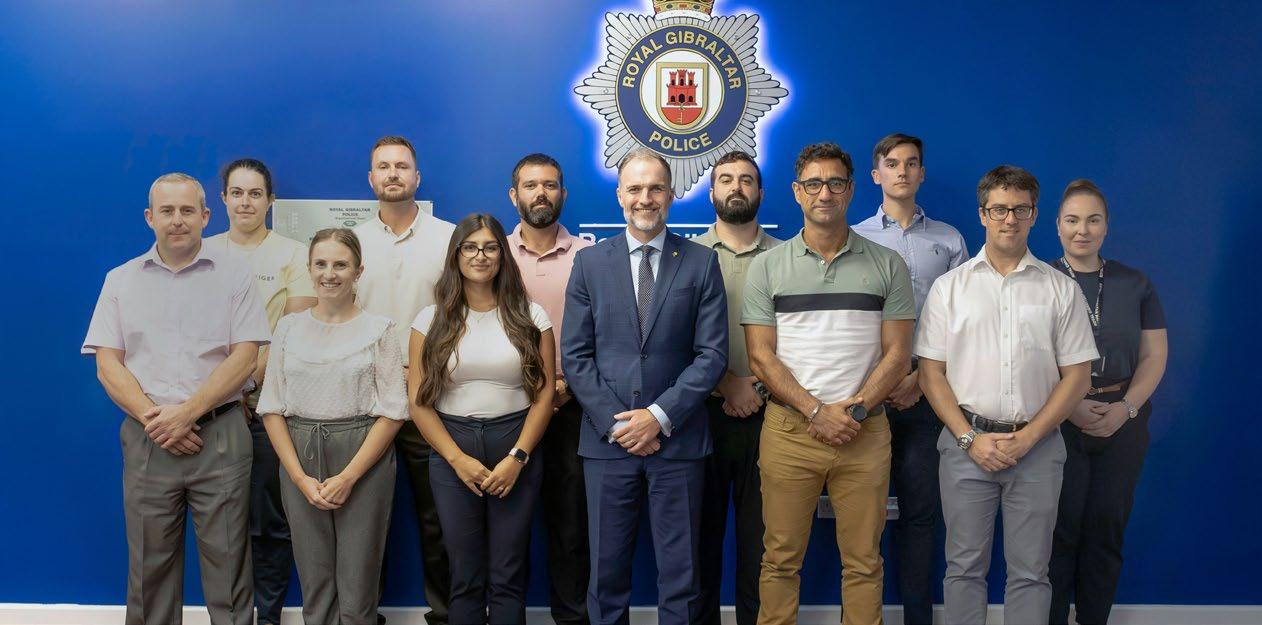
Twelve officers from the Royal Gibraltar Police (RGP) and HM Customs Gibraltar have successfully completed a two-week 'Significant Witness and Suspect Witness Interview' course.
The specialised training, led by former police officers and current crime
instructors from the United Kingdom, focused on current interview techniques for major, complex and serious investigations. This initiative is part of an ongoing commitment to professional development and inter-agency cooperation.
Commissioner of Police Owain Richards presented certificates to the officers, stating, "This valuable course is another example of the continued professional development and collaborative spirit within our law enforcement agencies. Well done to all involved."
I HAD THIS CONVERSATION WITH MYSELF RECENTLY.
“What if I just let myself break wide open? What would that mean and what would actually happen?
What if I broke open like a nut being smashed to pieces and the inside opened up and revealed me, totally vulnerable and unprotected. The shell smashed, the inside raw and exposed.
How could I break wide open and maintain my daily life? How could I break wide open and look after myself?
Is it possible to break wide open and yet maintain myself physically, intellectually (mentally), emotionally, spiritually?
Is it possible to break wide open and still take responsibility for yourself?
Is there a strength to be found in breaking wide open?
What if I broke wide open? What if I broke wide open? What would it look like? What would happen? Could I survive and what would that survival look like?
How would it happen? What form would it take?
Am I confusing breaking open with breaking down? Are they connected?
Is it necessary to break down in order to break wide open?
What would my life look like if I just broke wide open and revealed myself? Reveal myself to who?
I could start with myself. I could break wide open and reveal myself to me.
Does doing that become a form of control? Controlled detonation, which would control the process of breaking open which would then defeat the whole purpose of doing so? H’mm.
What would be the purpose of breaking wide open? Break wide open to reveal who you really truly are?
Smash the shell!
Opening of the heart. Break your heart wide open!”
I asked the dictionary... it said;
• To suddenly become much more active, known or successful – especially that which was previously contained or hidden.
• It implies a sudden shift or revelation that expresses something to a wider audience or context.
I deduced that breaking wide open would be to break all the chains of obstacles and hindrances that stand in the way of improving one’s quality of life. So, then we must look at what these obstacles and hindrances are that form the shell. (does it matter?)
What does the shell feel like? Is it an effective casing? An efficient protector?
Is the shell hard, resilient, brittle? Is it confident? Is it scared? Is it tired? Is it ready to crack? Will it resist?
What if I don’t know myself at all? What if I am afraid to break wide open, expose my carefully hidden vulnerability and find that I don’t like myself or that I find awful, unacceptable things about myself like … that I am not lovable or not good enough!! Better to hide from all that – or is it?
What would be the benefit of breaking wide open? Could I have the courage to stop defending myself and face my vulnerability?
I believe that in order to own, accept and learn to love ourselves we must be prepared to be vulnerable. To make the journey inside to the roots of our vulnerability, the roots of our insecurities and find out who we are. This, in turn will help us to understand where we are going and what our purpose is on this earth.
You take responsibility for yourself by breaking wide open. It is, in essence, an act of courageous self-love. Only by allowing yourself to break wide open, can you allow yourself to love yourself enough to share yourself with another without fear of rejection. To love yourself enough to allow another to love you. Only by receiving yourself fully can you allow yourself to believe that another could love you deeply and without judgement. Too often we look to others
for validation and if we have not broken open to ourselves and allowed our vulnerability to be seen, then we will end up validating our ego opinions of who we are and remain forever stuck in false, unsatisfactory relationships.
What is vulnerability, exactly? Emotional vulnerability is about letting yourself be seen and known for who you truly are, instead of how you might feel safer being perceived. It means being open and honest about your own feelings, thoughts and needs, and therefore developing compassion for the emotions and reactions of others.
Until we break wide open and learn to love who we are, as Divine beings, then we remain defensive of who we fear we might be. We let people in so far and no further and that creates separation. We don’t even know this is happening. The subconscious is so skilled at protecting us that we think we are being independent and strong. Wrong. Strength comes from being vulnerable. From breaking wide open to the truth of who we are. From opening to our vulnerability and knowing that we have no need of validation from anyone. God validated you the day he created you and other peoples’ opinions of you are not your business.
Be careful who you share your vulnerable inner self with though, as people can be cruel, so be discerning. When you recognise the ways in which you are hiding the real you even from those you love dearly then it is time to get help. Don’t do this work alone … find a skilled therapist who works with the spiritual you as well as the physical you. We know that we are spiritual beings living in these amazing physical bodies so it makes no sense to work on healing only the physical. It doesn’t work.
I urge you to embark on the real journey of self-healing by ‘breaking wide open’ to yourself and have the greatest adventure of your life!
Kate McHardy MA(Hons) PGCE MSPH Spiritual coach, teacher and healer.
Email: katemch@gmail.com
FB: The University of Light Group
Tel: +44 7712889534
Married in Gibraltar on 23rd August
Photographs by Jenna Brown



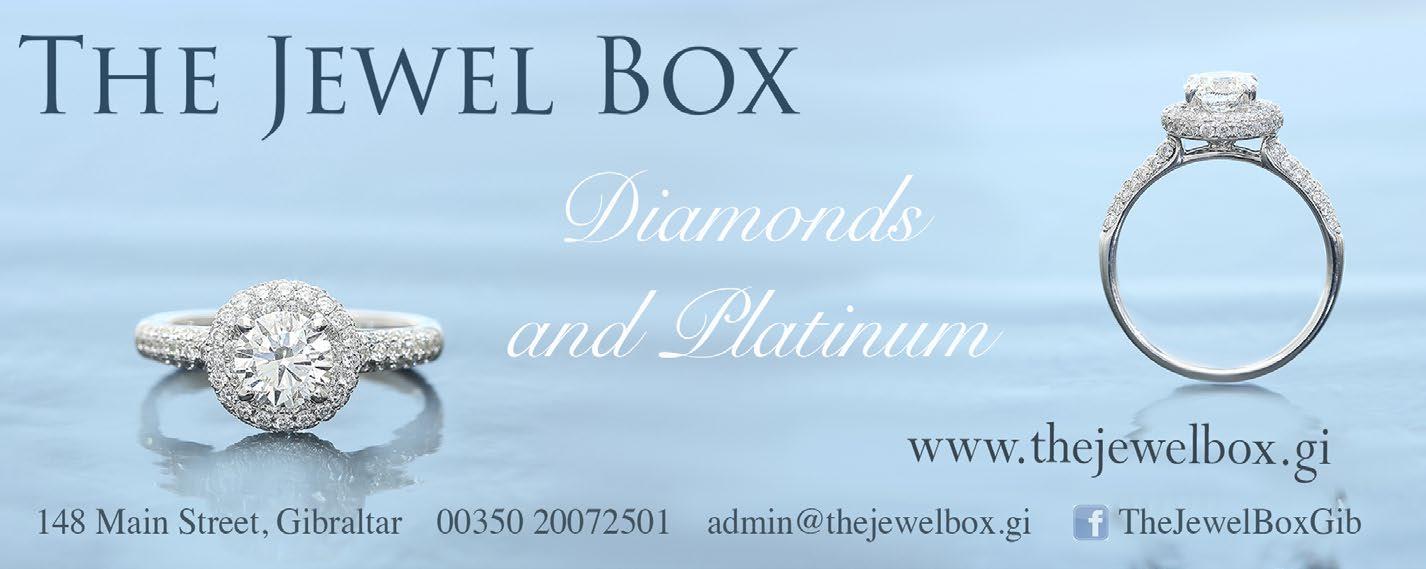

After a long summer break, we’re back into the swing of things and it’s more exciting than ever. From now until June next year we have a whole calendar of fun-packed themes and activities designed to spark curiosity, creativity, and joy in every child who attends our sessions!
Children love exploring the world around them, and this year’s themes are sure to capture their imaginations. Each week we will focus on a new adventure, filled with crafts, songs, stories, and activities that encourage both learning and play.
Here’s an example of some of our themes!
• Mini Beasts – From wriggly worms to beautiful butterflies, children will have the chance to discover the fascinating world of insects. Expect bug hunts, magnifying glasses, and plenty of creepy-crawly crafts.
• Peppa Pig – A favourite with many little ones, this week will bring Peppa’s world to life through stories, role play, and themed games. Perfect for encouraging imaginative storytelling.
• Dinosaurs – Roars of excitement are guaranteed as children stomp and stomp their way back to prehistoric times.
• Pirates – Ahoy there, mateys! Pirate week will set sail with treasure maps, eye patches, and shipmate songs.
• Julia Donaldson – Beloved stories like The Gruffalo and Room on the Broom will be celebrated with story sessions, crafts, and dress-up, inspiring a love of books from an early age.
• Monsters – Not the scary kind, but fun, colourful creatures that children can create and name themselves. This theme is all about sparking creativity and confidence.
• Superheroes – Children can become heroes for the day, dressing up and inventing powers. POW!
• Under the Sea – Dive into a watery world filled with fish, mermaids, and treasure chests. Sensory play with water, shells, and sea-themed crafts will make this week a favourite.
Each theme is carefully chosen to support different areas of early years
TOTALLY TODDLERS - MONDAYS 9.45AM - 11.45AM
Mid Harbours Family Centre. Come join us for Storytime, craft and play.
PLAY SENSE - TUESDAYS 9.45AM - 11.15AM
Mid Harbours Family Centre. A quieter play session for those children who may find our other sessions overwhelming. To book, please email pacsgib@gmail.com.
BUMPS & BABIES - WEDNESDAYS 9.45AM - 12.00PM
The Methodist Church. Our regular social catch up for parents to be and babies in a home from home atmosphere. This is a relaxed session where parents can meet up with their young babies to enjoy a cup of tea, make friends and talk about the highs and lows of parenting.
PLEASE LIKE AND FOLLOW OUR FACEBOOK PAGE FOR REGULAR UPDATES ON ALL OF OUR GROUPS: @ PACS GIBRALTAR
development — from fine motor skills and early literacy to problem-solving, social play, and creativity.
INTRODUCING THE ROLE PLAY CORNER AT DIDDY DISCOVERERS!
One of the most exciting additions to Diddy Discoverers this term is the brand-new Role Play Corner. This space has been designed to give children the chance to step into the shoes of grown-ups, sparking imagination and encouraging social play.
Over the coming months, the children will enjoy a variety of rotating setups, including:
• Construction Site – With toy tools, hard hats, and building blocks, children can work together to design, build, and create.
• Airport – Boarding passes at the ready! Children can check in at the desk, load luggage, and imagine flying to faraway places. This role play setup encourages communication and imaginative storytelling.
• Doctor’s Surgery – Young doctors and nurses can care for patients with stethoscopes, bandages, and appointment cards, encouraging empathy and an understanding of caring roles.
The Role Play Corner not only keeps play fresh and engaging but also helps children develop confidence, social skills, and early language through imaginative scenarios.
AND DON’T FORGET.. WE’RE A PLACE FOR PARENTS TOO!
PACS isn’t just about the children — it’s also a welcoming space for parents and carers. Sessions provide a chance to connect with other families, share experiences, and enjoy watching little ones learn and grow in a safe space.
Whether your child is fascinated by dinosaurs, loves dressing up as superheroes, or enjoys the magic of Julia Donaldson’s stories, there’s something for everyone at PACS!

COOKING CLUB – WEDNESDAY & FRIDAY 12.30 - 2.15PM
The Methodist Church. A fun session aimed at toddlers aged from 2.5 yrs upwards giving children the chance to make and try different foods. Booking required.
SENSORY STORYTIME – THURSDAYS 12.30 - 2PM
The Methodist Church. Come join us for some interactive Story Time Fun! Different themes every week!
DIDDY DISCOVERERS – FRIDAYS 9.45 - 11.45AM
The Methodist Church. Come join us for free play, story time and song time fun!
MONTHLY CRAFT CLUBS
Ages 2.5 upwards. Details will be announced on our Facebook page.
If reading that inspired any of you, we are always on the lookout for new volunteers. Any help is always well received, and you’ll be working with a great bunch of people. There is never a dull moment! Please contact us through our Facebook Page if you’d like more information!
Contact Us for more information!
Same day appointments – Only when necessary:
If you need a same day appointment call 200 52441 between 8:15am and 11:00am
If you need an emergency evening clinic appointment call 200 52441 between 4:00pm and 6:00pm
Advanced Appointments:
Patients who wish to make an advanced appointment or a telephone consultation with their named or preferred GPs may do so for up to 4 weeks in advance by; Calling 200 52441 between 11:00am and 3:00pm
Booking online via Gov.gi:
By using the Gov.gi eServices app







Other Services:
Patients who wish to use the following services,
• Over70’s Driving Medical
• Blood Clinic
• Well person or Sexual Health Clinic
• Smoke Cessation Clinic
May either
a) Call 200 52441 between 11:00am and 3:00pm,
b) Book online via Gov.gi
c) On the Gov.gi eServices app
Other Primary Care services:
Cancel an appointment - please call 200 72355 between 8:15am and 3:00pm or do so online via www.gha.gi
Repeat Prescriptions – please call 200 07909 between 11:00am and 3:00pm or do so online via Gov.gi or in the Gov.gi eServices app
Sick Note - please fill in the required form online via www.gha.gi or Gov.gi
General enquiries - please call 200 72355 between 8:15am and 3:00pm.
For urgent medical advice, patients can call 111 at any time.



• How serious breast cancer is depends on how big the cancer is, if the cancer has spread, and your general health.
• Breast screening (mammogram) can pick up breast cancer that is too small to feel or see, which may make treatment more likely to be successful.
• Sometimes breast cancer can spread to another part to the body, this is called secondary breast cancer.
Symptoms of breast cancer in women may include:
• a lump, or swelling in your breast, chest or armpit
• a change in the skin of your breast, such as dimpling (may look like orange peel) or redness (may be harder to see on black or brown skin)
• a change in size or shape of 1 or both breasts
• nipple discharge (if you are not pregnant or breastfeeding), which may have blood in it
• a change in the shape or look of your nipple, such as it turn ing inwards (inverted nipple) or a rash on it (may look like eczema)
• pain in your breast or armpit which does not go away – breast painthat comes and goes is usually not a symptom of breast cancer

Having the symptoms does not definitely mean you have breast cancer, but it's important to get checked by a GP. If your symptoms are caused by cancer, finding it early may mean it's easier to treat.
In the UK, 23% of breast cancer cases diagnosed are preventable. There are things you can do to lower your chance of getting breast cancer.
• try to cut down on alcohol and avoid drinking more than 14 units a week
try to lose weight if you are overweight
• try to quit smoking talk to your GP if you are worried about the affect the contraceptive pill or hormone replacement therapy may have on your risk of breast cancer
Breast cancer screening
Breast screening aims to detect breast cancers at an early stage. Diagnosing cancer at its earliest stages provides the best chance for successful treatment and outcomes.
The Gibraltar Health Authority’s Breast Screening programme invites women aged between 40 and 70 for a mammogram at two yearly intervals. Women over the age of 70 can self-refer. Everyone experiences mammograms differently.
Some women may feel slight discomfort during the procedure. Women with breast implants should still get regular screening mammograms as rec-
Any women in the 40-70 age group who have not yet received an invitation for your mammogram are asked to notify the Radiology Department on 20007214 or breastscreening@gha. Similarly, anyone who may not have taken up their invitation to attend a mammogram are encouraged to reschedule a
Local Breast cancer resources
There are various resources available including local suport and online resources.
• Breast Cancer Support Gibraltar: breastcancergib.com
• Breast Cancer Support Gibraltar is a local charity and pressure group which raises awareness about Breast cancer and offers support, information and practical advice to those affected by it.
Polycystic Ovarian Syndrome (PCOS) is one of the most common hormonal disorders affecting people with ovaries, particulalry those of reproductive age. It's estimated that upto 13% of women worldwide have PCOS, though many go undiagnosed for years due to the complexity of the condition and it’s various symptoms.
PCOS stems from an imbalance of reproductive hormones, particularly androgens and insulin. Most women with PCOS are metabolically resistant to insulin, either owing to genetic propensity or obesity.
This imbalance affects the ovaries, leading to irregular or absent menstrual cycles, and in some cases, results in the formation of small, fluid-filled sacs (cysts) on the ovaries.
However, the name "polycystic" can be misleading - not everyone with PCOS has cysts, and having ovarian cysts doesn’t automatically mean you have PCOS.
Symptoms of Polycystic Ovarian Syndrome vary widely, however some of the more common signs include:
• Irregular periods or no periods at all
• Excess hair growth (hirsutism), particularly on the face, chest, or back
• Acne or oily skin
• Weight gain or difficulty losing weight (especially weight gain around abdomen)
• Thinning hair or hair loss from the scalp
• Darkening of the skin, especially along neck creases, groin, and underneath breasts
• Difficulty getting pregnant (infertility)
There’s no single test to diagnose PCOS. Diagnosis typically involves:
• Medical history and symptom review
• Physical exam
• Blood tests to check hormone levels
• Ultrasound to examine the ovaries and uterus

Doctors often use the Rotterdam Criteria, which requires two of the following three for diagnosis:
• Irregular or absent ovulation
• Elevated levels of androgens
• Polycystic ovaries on ultrasound
Associated Health Risks
If left unmanaged, PCOS can lead to a number of long-term health issues, including:
• Type 2 diabetes
• High blood pressure
• High cholesterol
• Heart disease
• Endometrial cancer
• Sleep apnea
• Depression and anxiety
Managing PCOS
There is no cure for PCOS, but symptoms can be managed and general health can be improved through lifestyle changes and medications.
1. Lifestyle management
• Healthy eating: A balanced diet with whole grains, high in lean proteins, and plenty of fruits and vegetables can help manage weight and blood sugar.
• Exercise: Regular physical activity improves insulin sensitivity and helps with weight management.
• Weight management: Even a small amount of weight loss (5–10% of body weight) can improve symptoms.
• Before you make any changes to your diet or try and lose weight, discuss your plans with your healthcare provider
• Get regular checks and know your numbers. Checking your blood pressure blood sugar and cholesterol could allow you to prevent conditions later on in life.
2. Medications
All of the medications mentioned below should be discussed with your healthcare provider based on your individual concerns with PCOS.
• Hormonal birth control: Regulates periods, reduces androgen levels, and clears acne.
• Metformin: Helps control blood sugar and insulin resistance.
• Anti-androgens: Reduce hair growth and acne.
• Fertility treatments: For those trying to conceive, medications may be prescribed.
3. Mental Health Support
Because PCOS is linked to depression and anxiety, mental health support should be an important part of the treatment plan. Be mindful of your own mental health and try to make time to do things you enjoy. Getting enough sleep in a calm space , taking time for leisure activities and try to spend time around nature– as these are all things which can help lower your cortisol levels (stress hormone). High levels of cortisol are linked to Polycystic Ovarian Syndrome, potentially worsening it’s symptoms by increasing insulin resistence, promoting abdominal fat storage and disrupting other sex hormones such as estrogen and progesterone.
If you’re experiencing irregular periods, unusual hair growth, difficulty losing weight, or trouble getting pregnant, it's important to speak to your healthcare provider. Early diagnosis and management can significantly improve quality of life and prevent future health complicaitions.
Please note this article is intended as educational and not medical advice. For any concerns about the topics discussed, speak to you healthcare provider.
AS WOMEN AGE, THEIR RISK OF DEVELOPING CERTAIN CONDITIONS MAY INCREASE. FOR EXAMPLE, OSTEOPOROSIS, A CONDITION WHERE BONES BECOME WEAK AND BRITTLE, IS MORE COMMON IN POST-MENOPAUSAL WOMEN DUE TO THE DECREASE IN OESTROGEN LEVELS. OESTROGEN PLAYS A VITAL ROLE IN BONE DENSITY MAINTENANCE, AND WHEN IT DROPS, BONES CAN BECOME FRAGILE, INCREASING THE RISK OF FRACTURES.
As women age, their risk of developing certain conditions may increase. For example, osteoporosis, a condition where bones become weak and brittle, is more common in post-menopausal women due to the decrease in oestrogen levels. Oestrogen plays a vital role in bone density maintenance, and when it drops, bones can become fragile, increasing the risk of fractures.
Heart disease, stroke, and diabetes pose significant health threats to women. The loss of oestrogen’s protective effect on the cardiovascular system can increase the risks of high blood pressure, high cholesterol, and obesity, which in turn contribute to heart disease and stroke.
Maintaining a healthy lifestyle becomes even more critical as women transition through different life stages, particularly when faced with conditions like early menopause, which can bring on a host of challenging symptoms, including hot flushes, mood swings, and sleep disturbances. Although the exact cause of early menopause is often unclear, there are a number of factors that can increase the likelihood of early or premature menopause, such as genetics, smoking, low body weight, and certain medical treatments, such as chemotherapy or surgery.
Consulting a doctor is essential if menopause symptoms are severe or if there’s a risk of early menopause. Once diagnosed, women can take steps to manage symptoms and reduce the long-term health risks associated with menopause.
Hormone Replacement Therapy (HRT) is one of the most common treatments recommended for women experiencing menopause or early menopause. By restoring oestrogen levels, HRT can alleviate symptoms like hot flushes, night sweats, vaginal dryness, and mood swings. It can also offer protection against bone loss and cardiovascular problems.
Evening Primrose Oil is widely regarded for its potential benefits in managing menopause symptoms, such as hot flushes, irritability, and mood swings. Holland & Barrett Evening Primrose Oil which is extracted using the cold-press method and enriched with vitamin B6, is one such product that can support hormonal balance. Vitamin B6 contributes to normal

energy metabolism and can help reduce feelings of tiredness and fatigue, which are common during menopause. Evening Primrose Oil is known for its soothing effects and is often used to promote skin health and hormonal regulation.
Another herbal remedy often used for menopause-related symptoms is Black Cohosh. Known for its potential to reduce hot flushes and balance hormonal fluctuations, Black Cohosh has been used for centuries as a natural remedy. Holland & Barrett’s Black Cohosh supplement is an excellent option for women looking to alleviate some of the physical and emotional discomfort that can come with menopause. This product may help ease joint pain and reduce hot flushes, making it a useful addition to a menopause wellness routine.
To support bone health, especially during menopause, calcium and vitamin D are crucial nutrients. As oestrogen levels drop, women become more susceptible to bone density loss. Calcium is essential for maintaining strong bones, and Vitamin D helps the body absorb calcium more effectively. Holland & Barrett offers a range of calcium and vitamin D supplements that can be easily incorporated into daily routines to strengthen bones and reduce the risk of osteoporosis. The combination of these two nutrients can provide powerful support in maintaining bone health as women age.
Omega-3 fatty acids, found in fish oil and plant-based sources like flaxseeds and chia seeds, are essential for heart health. They help reduce inflammation, lower
blood pressure, and support cholesterol levels, all of which are key in reducing the risk of cardiovascular diseases. Holland & Barrett offers high-quality fish oil and plant-based Omega-3 supplements to help keep your heart healthy. Incorporating Omega-3s into your diet is an excellent strategy to promote long-term cardiovascular health, especially for women entering menopause or post-menopause.
Gut health plays a significant role in overall health, including immune function, digestion, and even mood regulation. During menopause, women may experience changes in digestion and metabolism, which can be managed with the help of probiotics. Holland & Barrett offers a wide selection of probiotic supplements that support gut health, boost immunity, and aid in digestion. These supplements can help alleviate bloating, constipation, and other digestive issues that may arise during menopause or as women age.
Magnesium is another vital nutrient that many women are deficient in. It helps with muscle function, energy production, and the regulation of the nervous system. Many women experience muscle cramps, leg aches, and sleep disturbances during menopause, and magnesium can be incredibly helpful in alleviating these symptoms. Holland & Barrett’s Magnesium supplements can provide the necessary support for muscle relaxation, restful sleep, and overall well-being.
Vitamin E is a powerful antioxidant that helps combat oxidative stress and supports skin health. It’s also believed to have potential benefits for managing menopause symptoms, such as hot flushes and vaginal dryness. Holland & Barrett offers high-quality Vitamin E supplements that can be taken to support skin health and ease some of the discomforts associated with menopause.
When it comes to women’s health, there is no one-size-fits-all approach. Every woman’s body is unique, and it’s important to find what works best for your individual needs. Whether through professional treatments like HRT or natural remedies like those offered by Holland & Barrett, there are many ways to support your health at every stage of life.





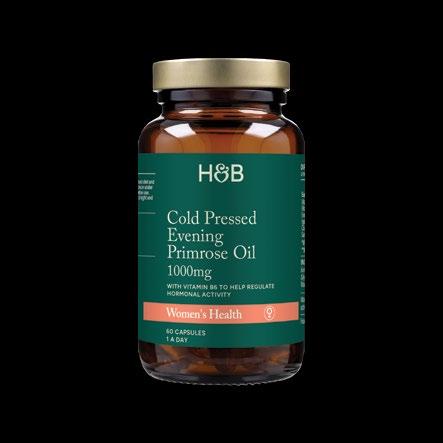


Walk into any shared kitchen and you’ll hear it: “I’m so OCD about my mugs.” Cute, but wrong. Obsessive–compulsive disorder (OCD) is not a personality quirk or a love of labelled spice jars. It’s a serious, often exhausting condition in which intrusive, distressing thoughts (obsessions) drive repetitive behaviours or mental acts (compulsions) to reduce anxiety or “prevent” feared outcomes. Yes, cleaning can be part of it. But so can hours of checking the oven, mentally replaying conversations to prove you didn’t offend anyone, or silently neutralising blasphemous or violent images with “just right” phrases. OCD is a shapeshifter, and it wastes time, erodes confidence, and, untreated, can shrink a life to the size of a ritual.
This piece is your brisk, research-grounded tour: what OCD is (and isn’t), how clinicians diagnose it, what we think causes it, what the evidence says about treatment, and why the gold-standard therapy sounds scary but works. We’ll keep it human and occasionally funny, because a wry grin helps, but the facts come first.
What OCD is - and what it definitely isn’t Clinically, OCD is defined by the presence of obsessions and/or compulsions that are time-consuming (typically an hour or more a day) or cause significant distress and impairment—at work, in relationships, or simply in getting through a Tuesday. Obsessions are intrusive thoughts, images, or urges (e.g., What if I stabbed my partner by mistake?), often experienced as unwanted and ego-dystonic (not aligning with one’s values). Compulsions are repetitive behaviours (washing, checking, ordering) or mental acts (counting, praying, ruminating, “cancelling” thoughts) performed to reduce anxiety or prevent a dreaded event. Crucially, compulsions bring short-term relief that reinforces the cycle, like scratching a mosquito bite that promptly itches more. These core features are captured in both DSM-5-TR and ICD-11, the main diagnostic bibles clinicians use.
Common OCD “themes” include contamination/washing, checking (locks, applianc-
es, emails, memory), harm (fears you might cause or fail to prevent catastrophe), symmetry/“just-right” sensations, intrusive sexual or violent images (often taboo and not predictive of behaviour), scrupulosity (moral or religious worry), and mental compulsions (covert rituals that leave no soap suds but plenty of misery). If your mental picture of OCD is only bleach and rubber gloves, you’re missing most of the story. Authoritative reviews emphasise the breadth of presentations and the heavy functional toll.
How common is OCD? Large epidemiological studies put lifetime prevalence roughly in the 1–3% range, with year-on-year figures around 0.7–3% depending on country and methods. It’s one of the more disabling psychiatric conditions when you count lost quality of life. And it isn’t harmless. A 2024 analysis in BMJ reported elevated all-cause mortality in people with OCD, with non-communicable diseases and external causes (including suicide) as key contributors, another reason timely, evidence-based care matters.
How clinicians diagnose OCD
A diagnosis rests on a structured clinical assessment: Do obsessions and/or compulsions occur? Are they time-consuming or impairing? Are they better explained by another condition (e.g., psychosis, autism, a tic disorder) or substance? DSM-5-TR specifies that obsessions are intrusive and unwanted, and compulsions are repetitive acts aimed at reducing distress or preventing feared events, even when not realistically connected to those events. ICD-11 for OCD (code 6B20) similarly requires recurrent obsessions/compulsions that causes marked distress or impairment. Severity is commonly measured with the Yale–Brown Obsessive Compulsive Scale (Y-BOCS) or its second edition (Y-BOCS-II), validated tools that track symptom intensity over time. Recent work confirms strong psychometrics for Y-BOCS-II and offers updated severity “benchmarks”—useful when you’re trying to tell if treatment is working or merely rearranging deckchairs.
NICE guidance in England and Wales, reviewed most recently in July 2024, remains the practical roadmap: recognise, assess, diagnose, and treat OCD with evidence-based options; support families; consider comorbidities; and step care intensity up or down according to need.
What causes OCD? (Short answer: no single culprit. Longer answer: circuits, chemistry, genesand learning.)
OCD isn’t “caused” by being tidy, anxious, or religious. The most consistent biological story centres on cortico-striato-thalamo-cortical (CSTC) circuits, neural loops that integrate decision-making, error detection, and habit learning. In OCD, these loops seem to be over-active or poorly regulated, leading to a hair-trigger sense that “something is wrong” plus difficulty shifting from habitual to goal-directed control. Think of it as a stuck gearshift between careful planning and autopilot. Recent reviews and imaging studies point to altered glutamate and GABA signalling in regions such as the anterior cingulate and supplementary motor area, dovetailing with the habit-vs-goal-directed research we’ll come to in a moment.
Genetically, OCD is heritable, first-degree relatives of people with OCD carry a several-fold increased risk, yet there’s no single “OCD gene”. Rather, many variants each nudge risk a little, interacting with life experiences. Large 2023 summaries underscore familial aggregation and polygenic architecture.
From a learning perspective, the OCD loop makes cruel sense. Intrusions are universal; most people have odd, unsettling thoughts. What differentiates OCD is the meaning attached to those thoughts (“having the thought is dangerous/immoral”) and the learnt relationship between anxiety relief and rituals. Perform the ritual → anxiety drops → brain logs the ritual as “useful” → you’re more likely to do it next time, classical negative reinforcement on an infernal treadmill. Contemporary models add that compulsions exploit the brain’s habit systems, overpowering flexible, goal-directed control; recent experimental and computational studies continue to refine how that imbalance works.
Newer biology angles are being explored, glutamatergic drugs, astrocyte function, and even lipid metabolism, none yet a silver bullet, but part of a richer mechanistic picture.
Symptoms: beyond bleach and colour-coded bookshelves
A few vignettes (based on real clinical themes):
• The checker spots a pothole and must drive back thrice to confirm they didn’t run someone over. Relief lasts minutes. Meetings do not.
• The harm-obsessed new parent endures flashes of horrific images (dropping the baby; stabbing the baby). They avoid nappy-changing and hide the kitchen knives, yet adore their child. (Intrusive content ≠ intent.)
• The mental ritualist repeats a “safe” phrase in their head to neutralise a blasphemous thought. No soap, no suds—just hours lost.
• The “just-right” arranger has an internal click that signals “correctness”; until it clicks, they repeat, re-write, re-read.
Each cluster fits the same template: a sticky intrusion + an urgent need to reduce anxiety + a ritual that “works” briefly but teaches your brain the wrong lesson. NICE’s symptom descriptions and DSM/ICD criteria reflect this breadth, and major reviews emphasise the variable themes.
1) Cognitive behavioural therapy with exposure and response prevention (ERP) If OCD had a nemesis, it would be ERP. The method is simple in concept and demanding in practice: you gradually and systematically face the triggers (exposure) while refraining from rituals (response prevention), allowing your brain to learn, through experience, that anxiety can peak and fall without the ritual, and that the feared catastrophe doesn’t materialise. Over sessions, you climb a ladder of exercises tailored to your themes, from easier to harder, in real life and sometimes via imaginal exposure for purely mental obsessions. Decades of trials and recent meta-analyses confirm ERP’s efficacy; it outperforms many active controls and neutral therapies and remains the first-line psychological treatment in NICE guidance.
How strong is the evidence? Meta-analyses from the last few years continue to show ERP’s benefits for symptom reduction, with durable gains when treatment is completed. There’s lively research on delivery formats—intensive outpatient programmes, tele-ERP, and mixed-reality/VR adjuncts. Early telehealth data are promising for access, while a 2025 trial of mixed-reality ERP for contamination symptoms didn’t beat an active self-guided control, suggesting high-tech isn’t automatically higher-impact. The core ingredients still matter most: good case formulation, graded exposure, and, hardest of all resisting rituals.
A modern twist is inhibitory-learning-based ERP, which emphasises violating threat expectancies (testing the feared prediction directly) over mere anxiety “habituation”. Early development studies in OCD are underway; watch this space, but don’t wait to try classical ERP—its track record is long and solid.
2) Medication
Selective serotonin reuptake inhibitors (SSRIs) can be used for treatment of OCD, often at higher doses and longer trials than for depression. Clomipramine, a tricyclic that also boosts serotonin, is effective but less well tolerated. Meta-analyses suggest broadly similar efficacy among SSRIs; response can be slow, with improvement unfolding over weeks to months. Recent summaries note that higher “supratherapeutic” SSRI doses may confer additional benefit in OCD (with the usual caveat: balance gains against side effects, and do this under medical supervision). NICE continues to recommend SSRIs with careful monitoring, stepped according to severity and patient preference.
Augmentation strategies, for people who don’t respond adequately, include adding lowdose antipsychotics in selected cases and, in research settings, targeting glutamate (e.g., memantine or other glutamatergic agents). A 2025 umbrella review concluded glutamatergic medications show promise, especially for treatment-resistant cases, but these are not yet mainstream first-line options. PMC
3) Neuromodulation
(for treatment-resistant OCD)
Repetitive transcranial magnetic stimulation (rTMS), including deep TMS protocols, has regulatory clearance in several jurisdictions for OCD after failure of standard treatments, reflecting a growing (though heterogeneous) evidence base. Systematic reviews from 2023–2025 suggest clinically meaningful benefits for some patients, while emphasising protocol nuances and the need for specialist centres. Deep brain stimulation (DBS) remains a last-resort option for the most severe, refractory cases, typically combined with ERP to consolidate gains.
Does OCD get better on its own?
Sometimes symptoms wax and wane, but untreated OCD commonly persists. The good news: with proper treatment—especially ERP, with or without medication—most people improve substantially, often reclaiming hours a day and major life goals. Recovery isn’t about never having odd thoughts (no human achieves that); it’s about changing your relationship with them and dismantling the rituals that keep the disorder fed. The evidence base, across trials and clinic outcomes, is encouraging.
The science of “why rituals stick”: habits vs goals
One of the most compelling research threads in recent years looks at the tussle between goal-directed and habitualcontrol. Goal-directed actions consider consequences; habits are efficient but inflexible stimulus-response routines. Multiple studies (using paradigms like outcome devaluation and two-step tasks) suggest that, in OCD, habitual control can dominate when it shouldn’t, and the arbitration between systems is off-kilter. Neural and neurochemical findings (glutamate/GABA balance in regions coordinating action control) echo this. Why does this matter? Because ERP is, in part, habit retraining— you’re teaching your brain that the old ritual is unnecessary and that tolerating discomfort leads to better outcomes.
What an ERP plan actually looks like: Imagine your key fear is “If I don’t check the front door exactly five times, we’ll be burgled.” A therapist trained in OCD will:
• Map the cycle: the trigger (leaving home), obsession (what if…), anxiety spike, ritual (five checks), short-term relief, long-term trap.
• Build a ladder (hierarchy) of exposure tasksfrom easier (leave and check once) to harder (leave and don’t check at all; even invite a what-if thought).
• Run experiments: leave the door after one check and wait out the urge. Notice anxiety rise, plateau, and fall without checking. Keep data: did burglary ensue? (Spoiler: no.)
• Tackle mental rituals: if you neutralise with a phrase, you’ll practise not doing that either, or using “uncertainty-tolerating” responses.
• Generalise: add real-life challenges: lock the door and go for a walk, sit with uncertainty, do valued activities while anxiety ebbs on its own.
Sessions can be weekly or intensive; many services now offer group formats or tele-ERP, which evidence suggests can be effective for many. It’s not comfortable, but it’s liberating.
Medicines: the practical bits people actually ask
• How long until SSRIs help? Some improvement can begin within a few weeks, but meaningful change often accrues over 8–12+ weeks; treatment courses commonly last months, and relapse prevention plans matter. Reviews note a gradual improvement curve and the importance of adequate dose.
• Are some SSRIs “stronger” than others? Head-to-head analyses generally find similar efficacy across SSRIs, with clomipramine comparable but with more side-effects. The “best” is the one you tolerate and take consistently.
• Do doses run higher than for depression? Often, yes; recent summaries even explore “supratherapeutic” dosing in specialist care. This needs careful supervision for safety.
NICE’s stepped-care approach is your north star for the UK: mild to moderate OCD often starts with ERP-focused CBT; more severe or long-standing OCD often warrants combined ERP and SSRI, with specialist referral if you’re not improving.
Recent wrinkles in the literature
• Tech-assisted exposure: A 2025 randomised trial of mixed-reality ERP for contamination fears didn’t outperform an active self-guided exposure condition—useful humility for the shiny-tech crowd. The message: it’s the principles of ERP that cure, not the headset.
• ACT + ERP: Integrating Acceptance and Commitment Therapy processes (values, cognitive defusion) with ERP showed promise in a 2025 RCT, with maintained gains at follow-up. It’s not a replacement, more a stylistic infusion that may help some people engage.
• Glutamate-targeting meds & astrocytes: 2025 reviews highlight glutamatergic augmentation as a frontier and point to astrocyte dysfunction in OCD, lab science that may translate to novel treatments later.
• Habit–goal circuitry: Ongoing 2023–2025 studies refine how the brain arbitrates between control systems in OCD, interesting academically, and a neat way to explain why “white-knuckling” rituals makes them stronger.
A note on children and young people
Children can and do get OCD. The shape can look different (e.g., more “just-right” rituals, family accommodation). NICE includes guidance for young people; in paediatrics, SSRIs show small but significant effects in meta-analysis, with severity moderating response—again, therapy remains central, adapted to age and family context. NICE+1
“But I don’t clean - could I still have OCD"?
Yes. Plenty of people with severe OCD have immaculate rituals that are entirely mental. They may appear outwardly fine while battling hours of internal checking, reassurance seeking, or reviewing. One grim joke in clinic is that if compulsions were all visible, waiting rooms would be a sea of hand-sanitiser; in reality, much of OCD happens behind the eyes. DSM-5-TR and ICD11 explicitly include mental compulsions; NICE guidance and major reviews underline that OCD is a content-agnostic process.
Living with OCD: practical wisdom from evidence
• Drop the safety behaviours: The single biggest accelerator in ERP is genuinely not doing the ritual (including subtle versions—asking your partner, Googling “Am I a monster?”, repeating phrases). This is the “response prevention” in ERP.
• Expect discomfort (then boredom): Anxiety peaking and falling is the point. Over time, your brain stops sounding the alarm because you’ve taught it nothing bad happens without the ritual.
• Measure what matters: Using a severity scale like Y-BOCS-II with your clinician can turn vague impressions into clear progress markers.
• Mind the headlines: New gadgets and pills are exciting; the bedrock remains ERP and, where appropriate, SSRIs—delivered well, at adequate dose and duration.
Final myth-busting
Myth: “If I think awful thoughts, I must be dangerous.”
Fact: Intrusive thoughts are a universal human glitch; OCD sufferers are typically less likely to act on taboo thoughts because they abhor them. The problem is the alarm system, not your morals. Authoritative texts and reviews stress the ego-dystonic nature of obsessions.
Myth: “ERP is cruel.”
Fact: ERP is collaborative, graded, and values-led—firm, yes; cruel, no. It aims to give you your life back, not to torture you. The best evidence we have supports it as the most effective psychological treatment we possess.
Myth: “Medication should fix this in a fortnight.”
Fact: Expect weeks to months; higher doses are often needed; combining with ERP is common for moderate–severe cases.
The bottom line
OCD is common, diverse, and treatable. It’s not a quirk, a cleanliness contest, or a personality type. It’s a looping dance between intrusive doubts and rituals that promise safety but quietly steal your time. The science points to misfiring brain circuits and habit systems; the therapy teaches your brain a new tune. If you recognise yourself in these pages, you’re not alone—and you’re not stuck. With ERP (and, when needed, medication), people reclaim hours, jobs, relationships, and futures. That’s not tidy; that’s transformative.
Jacob Kuyuate (Bsc. Msc. PgCert. | Qualified Psychological Wellbeing Practitioner)

Bosco, a beautiful 2-year-old crossbreed, arrived at Los Barrios pound in April 2025. Gentle, affectionate, and sociable with both people and animals, he loves his walks, cuddles, and belly rubs. Closely bonded with his friend Tristan, Bosco is a loving soul who deserves the safety and comfort of a caring home. Could you give him the new beginning he needs?
www.spanishstraydogs.org.uk
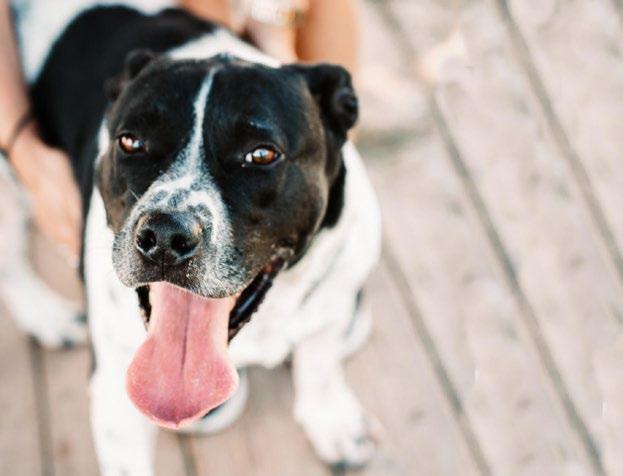
Snoopy is 5 years old and is a very cute and loving boy. He is friendly with others and respectful of their space. He is playful, but also soft and gentle. He is looking for a family to love him and give him a happy, loving home.
More info: www.ainf.gi

Toby, an 8-year-old gentleman who arrived at Los Barrios pound in March 2025. Calm, sweet-natured, and sociable with both dogs and cats, Toby enjoys simple pleasures like rolling in tall grass and going for peaceful walks. He is ready to leave kennel life behind and find the comfort of a loving home where he can share his gentle heart. Could you give Toby the second chance he deserves?
www.spanishstraydogs.org.uk
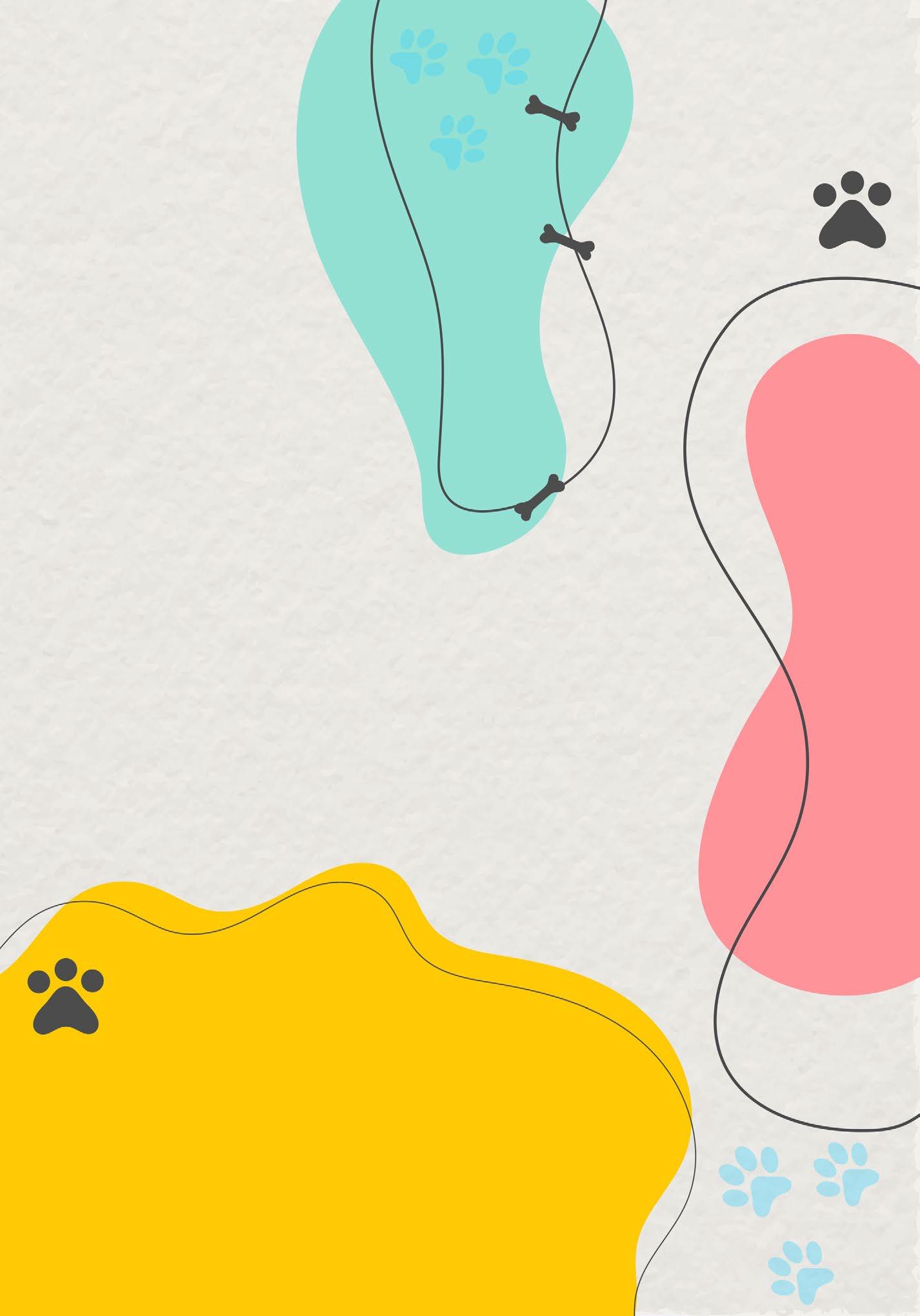



Beautiful Finn is only two years old but has had a hard life already after being abandoned and left tied to a tree. Despite this he has a lovely character. He is well socialised and submissive in a dog group, he gets on well with other dogs and he is very affectionate. He is looking for a family to have fun and stay active with.
More info: www.ainf.gi
A
There are a few reasons for this:
Primarily these companion animals are totally dependent on humans for their existence. They exist because man has bred these animals to fit certain stereotypes that are favoured by the whims of humans. Animals have been selectively bred with short noses, long noses, short legs, long legs, big and muscular, thin and sinewy etcetc, the list is endless. As a direct result of this we do not have natural evolution with the survival of the fittest but we have created animals with genetic defects that often leads to illness and physical deficiencies. As a direct result of this we generally have to take pets for veterinary care more often than a wild animal.
Another reason is that our pets are totally dependent on us, they can’t make a judgement call and decide that they should pop down to the vets for a check-up. As they can’t communicate their health is totally dependent on their carer, who has
to pick up on symptoms of malaise and seek medical care for them when necessary.
Also we treat a pet earlier than we would treat ourselves in many cases. For example, we live in a dense urbanised environment so if you take your dog out and it has diarrhoea you will seek out veterinary care far sooner than if it was yourself. There are few things worse than having to pick up liquid stools!!
However I don’t believe you do go more often to the vets more often than you do for yourselves or members of your family, relatively speaking. Our companion animals live for an average of 15 to 20 years, human’s life for an average of between 70 and 80 years. This means that their life and all potential illnesses are compressed into a far smaller timeline. Animals suffer from the majority of diseases that humans do, obesity, diabetes,liver, kidney etc, just at an accelerated rate due to their shortened life span

WORDS BY MARK PIZARRO
. In my estimation over our lifetime we are probably more likely to seek medical assistance more than often than your pet.
Due to changes in human behaviour with more social media and general nastiness in the world where people become entrenched in their own views, very much due to the algorithms on social media, we are seeking companionship elsewhere. Somewhere where we are not judged or fed false smiles and duplicitous handshakes. More and more people are finding this in their companion pets, always happy to see you, always forgiving, always there for you. This places a lot of expectation on your vet, we can’t perform miracles all the time but we will always try our hardest because we are aware of how important those furry friends of you are.
So keep loving those pets and give them the care they deserve, their life is short, make it great!









1. Eagerly desirous of achieving or obtaining success, power wealth, a specific goal, etc. (9)
5. Large game fish. (4)
7. Not definite; ambiguous. (7)
9. B_ _ s. a person who employs or superintends workers. (2)
11 Fluid from the eyes. (5)
12. A vital, basic decisive, or pivitol point. (4)
13. A cupronickel-clad coin of the U.S and Canada, the 10th part of a dollar, equal to 10 cents. (4)
14. To make a wager. (3)
15. A requirement, necessary duty, or obligation. (4)
16. At one time in past; formerly. (4)
1. Hard working insects. (4)
2. _ _ _ _ s, something given or paidover and above what is due. (4)
3. Excessive, especially extremely so. (9)
4. The violation or profanation of anything sacred. (9)
6. Attached, appended. (7)
8. A titled nobleman or peer. (4)
10. To glance at or over or read hastily. (4)
11. A long hollow and typically cylindrical object. (4)


Email your completed entry along with your name and contact number to jeaninsight@gibtelecom.net.
Entries to be received on / before 24 September.
The winner will be drawn from all correct entries and will receive a £50 voucher to spend at Las Iguanas, Gibraltar.
Entrants must be 18 years or older.

BMI Group are an established and a leading real estate agency with a strong presence in Gibraltar. Over the past three decades we have successfully played a key role within the local property market and acted as consultants for major residential and commercial developments such as, Atlantic Suites, Kings Wharf, Buena Vista Park Villas, The Sanctuary and The Anchorage to name but a few.
BMI offers sales, lettings, commercial, management and consultancy services to a wide portfolio, including banks, law firms, accountancy firms, gaming, high net worth clients and private clients.

